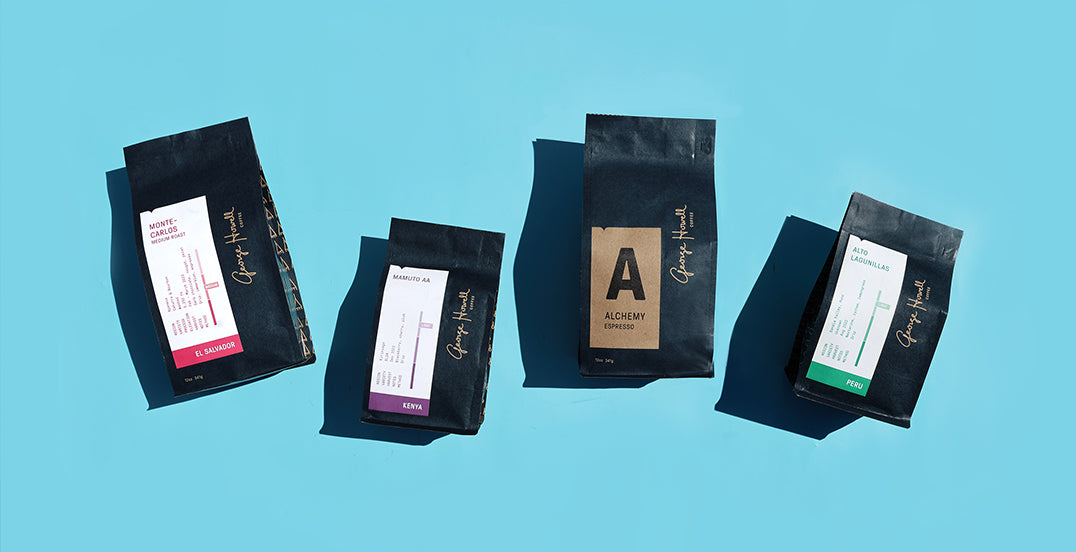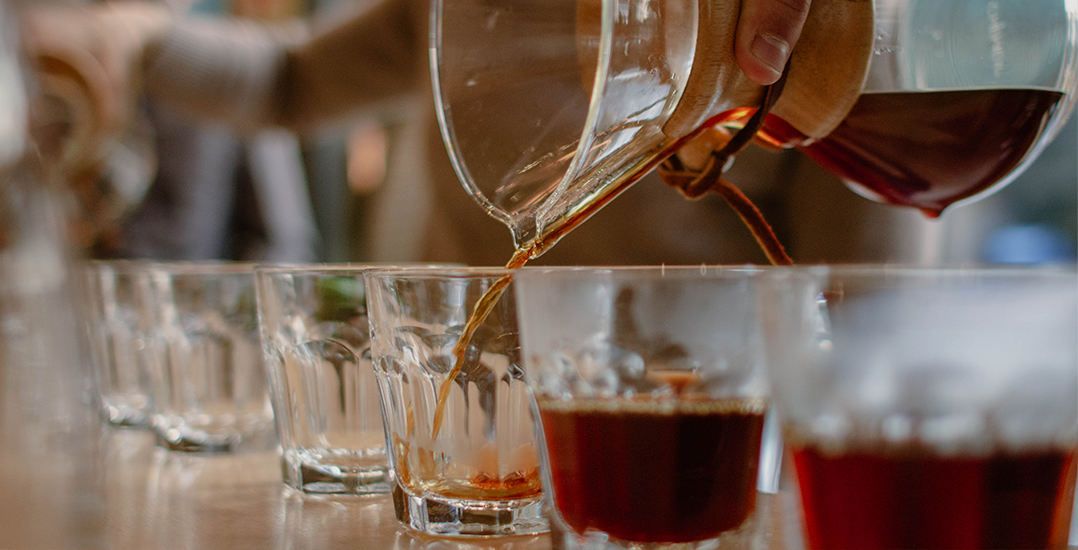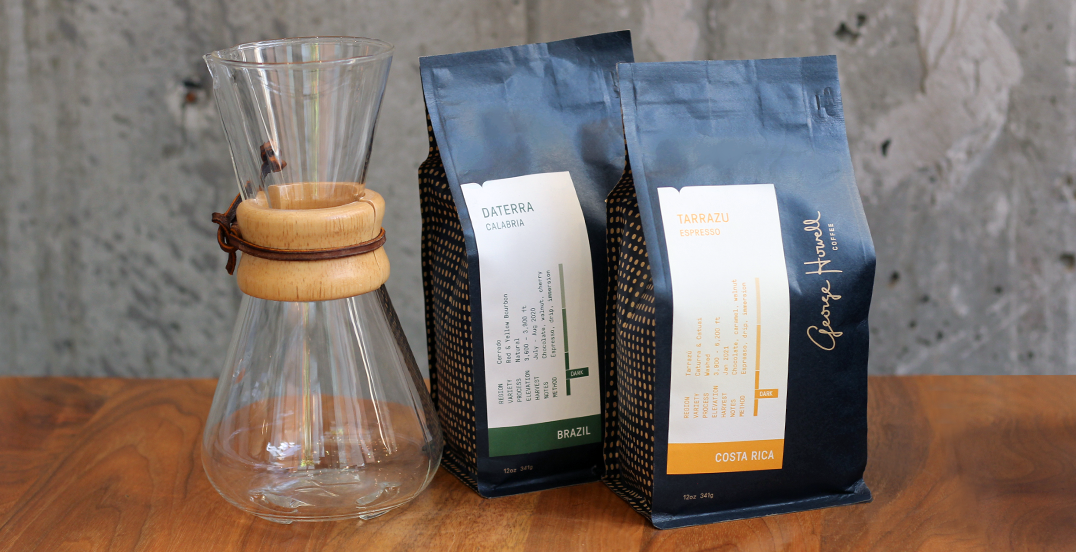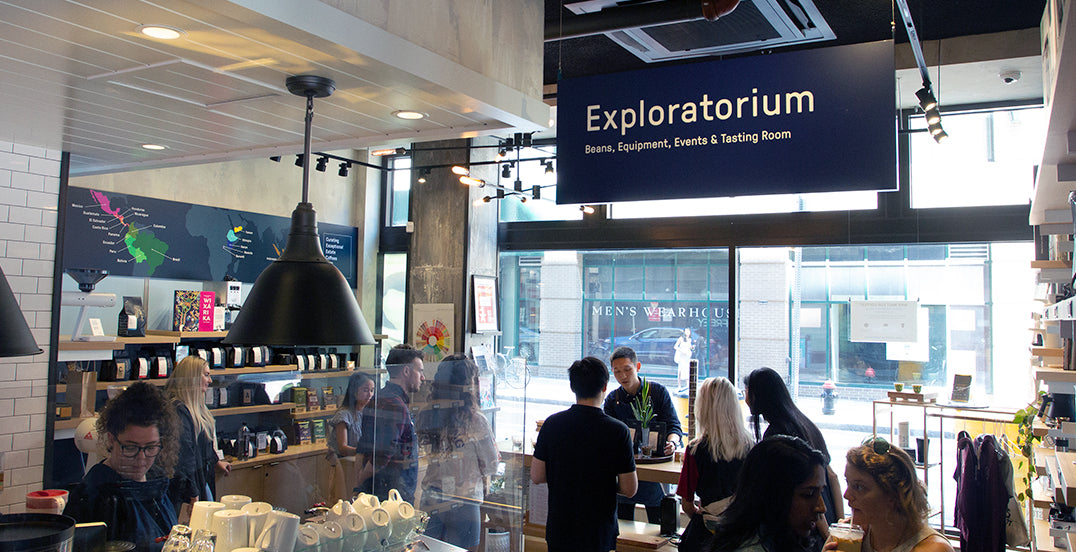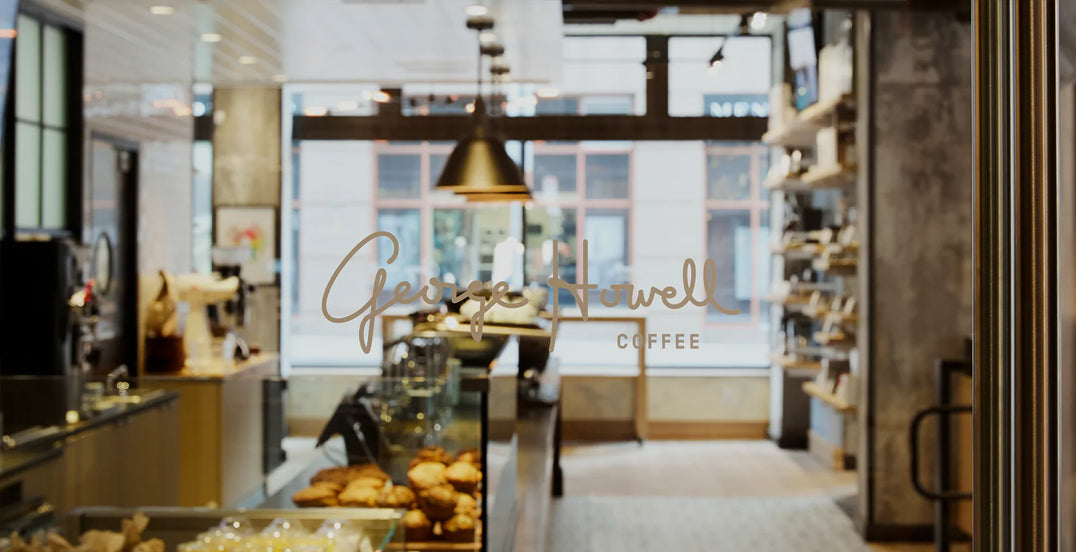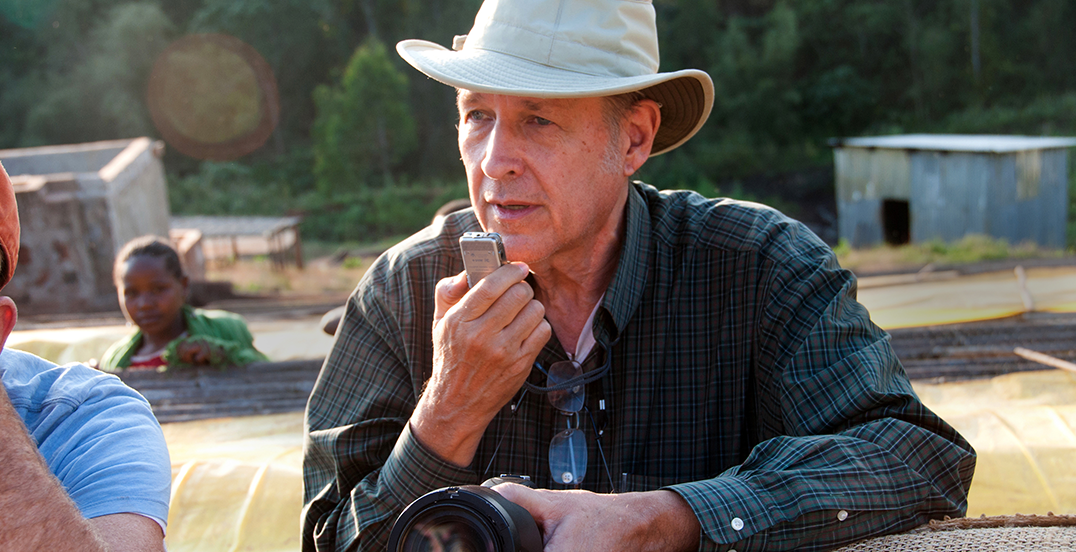El Injerto stands as an iconic estate in the Specialty Coffee realm, having clinched more first-place victories in The Cup of Excellence than any other farm globally.
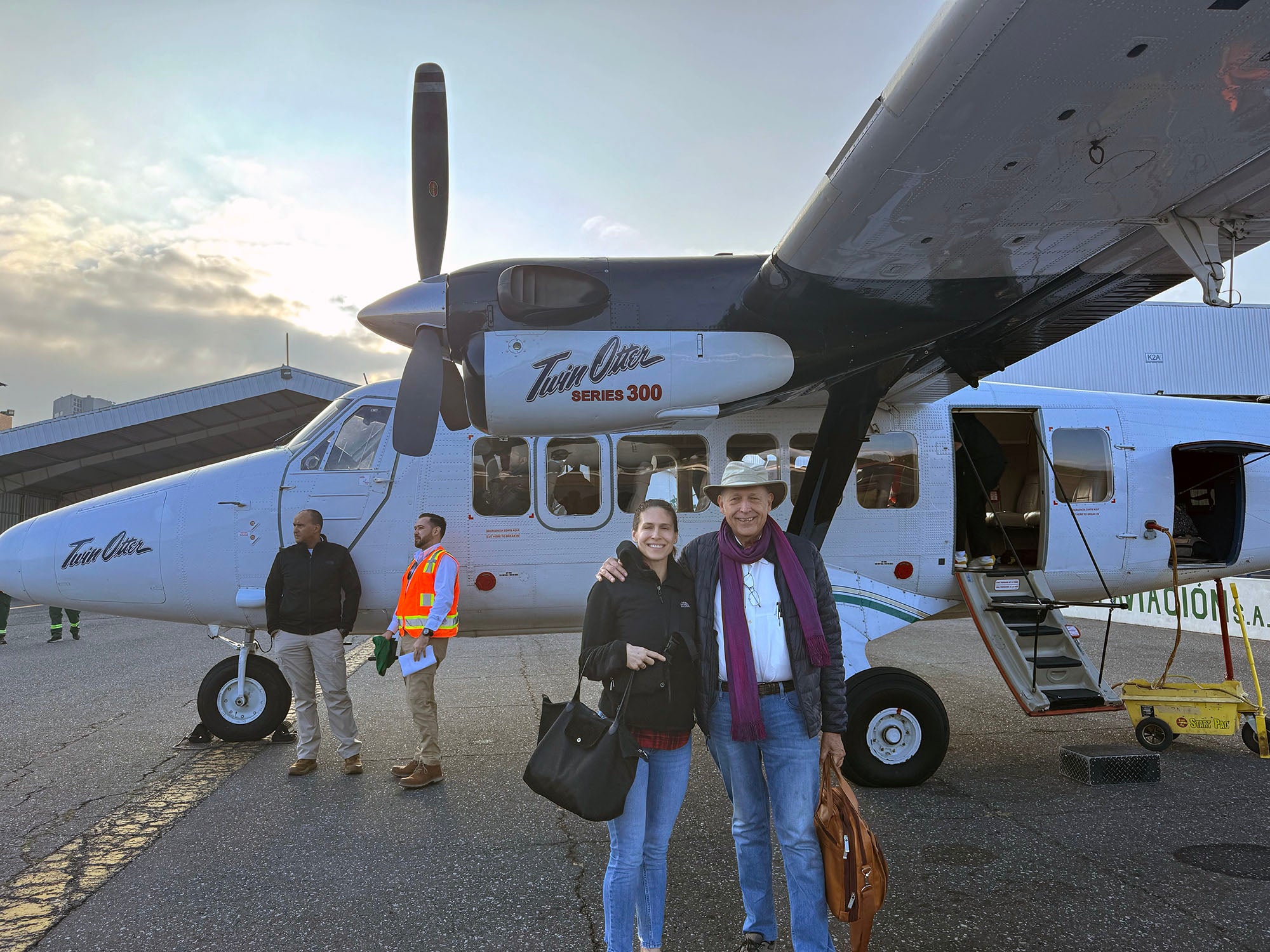
On the plane!
Taking off!
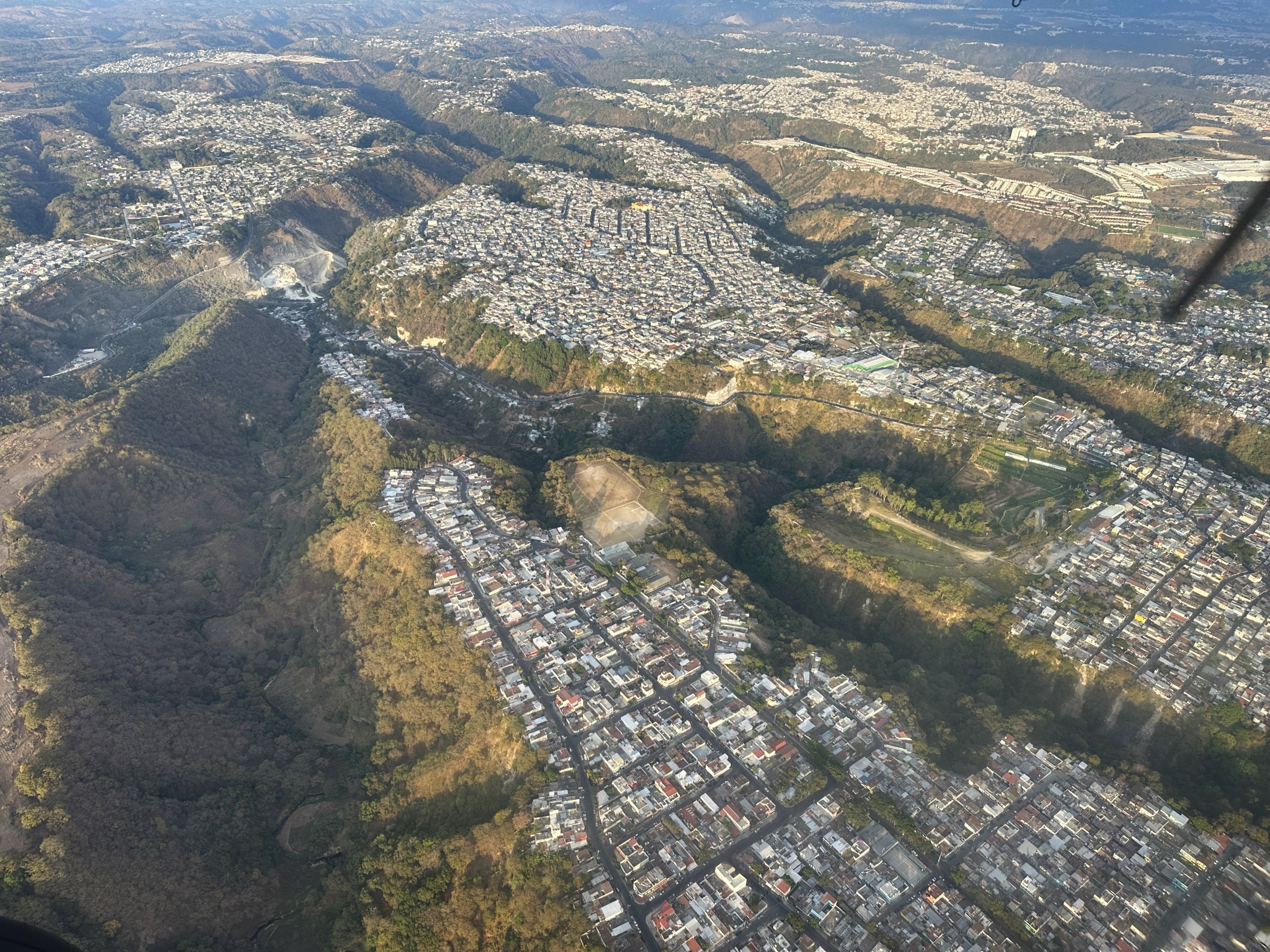
Guatemala City suburbs: gorges
everywhere!
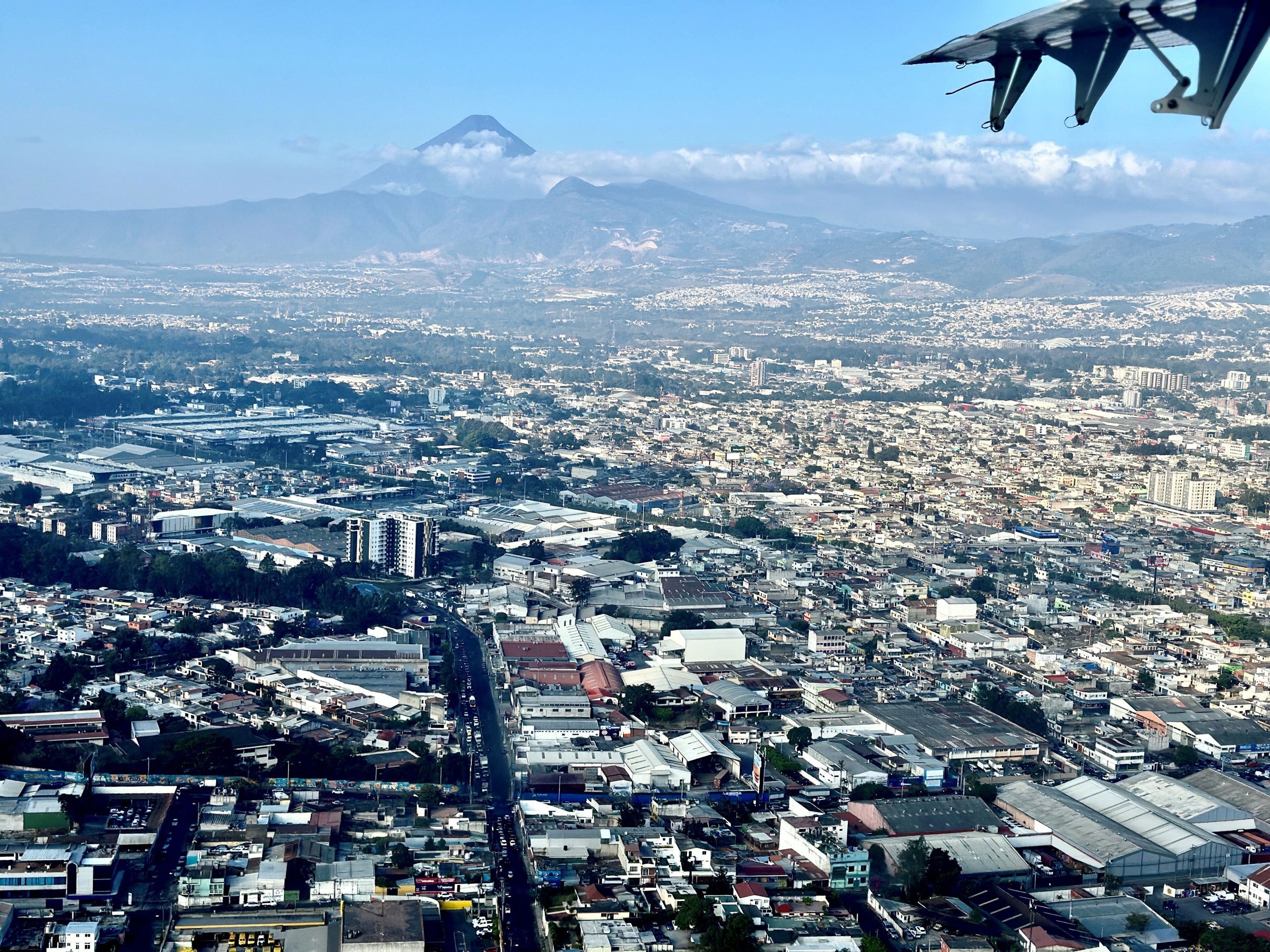
Over Guatemala City. Volcan de Agua in the distance.
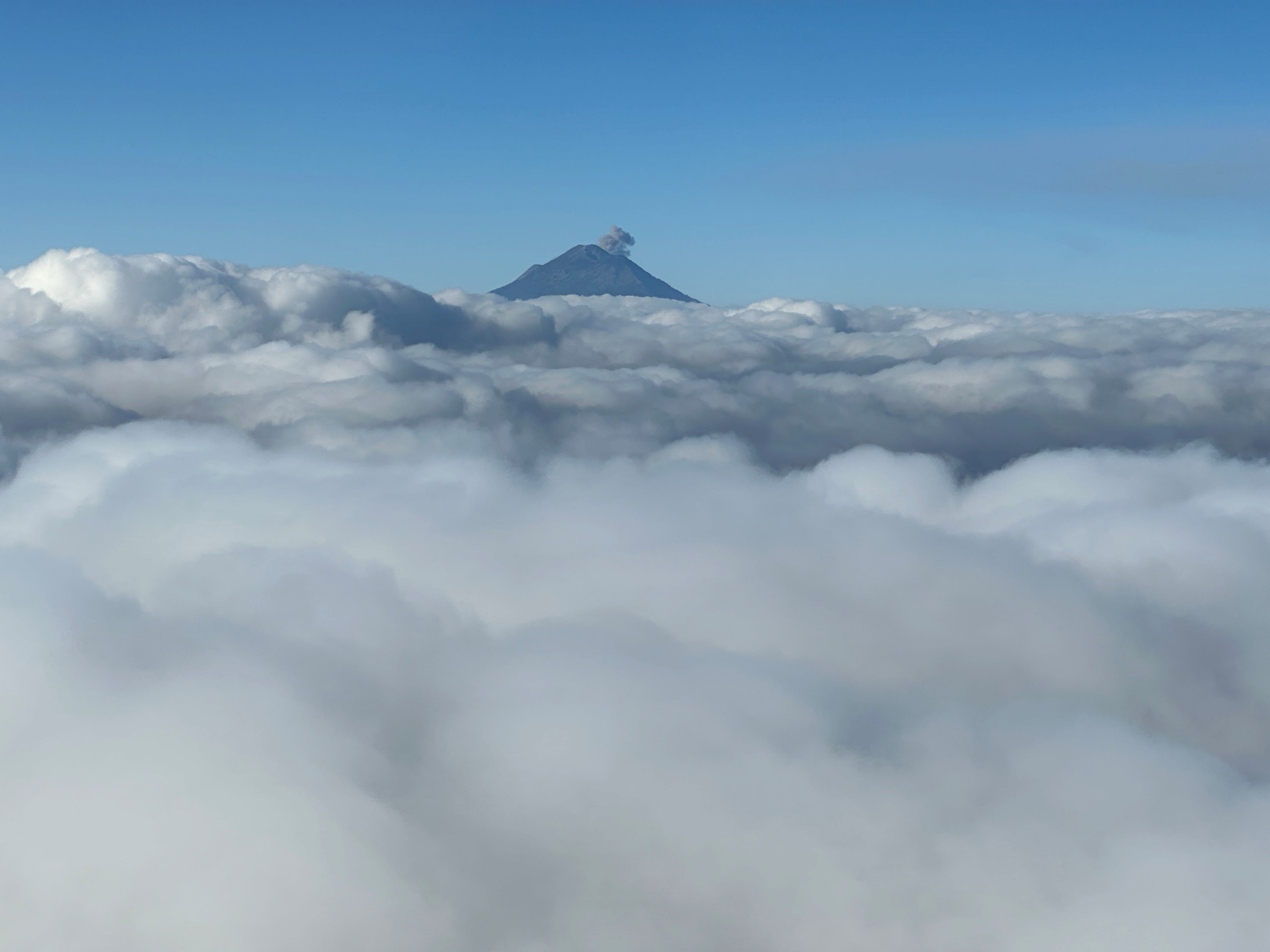
On the way, Volcan de Fuego, smoking away! A farm we buy from, La Soledad, is situated below the clouds.
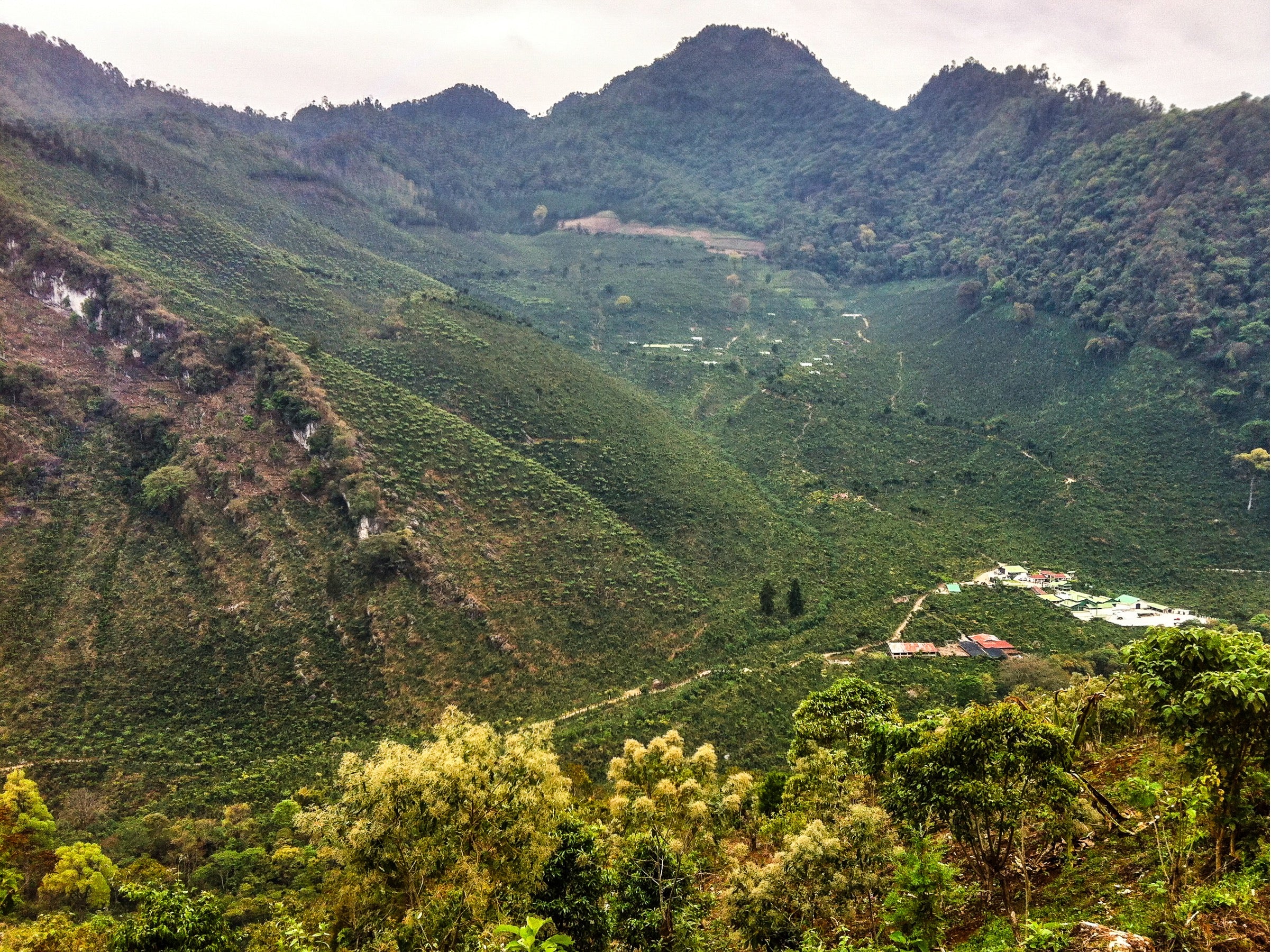
A photo taken of El Injerto in 2013. We can't wait to see what's changed!
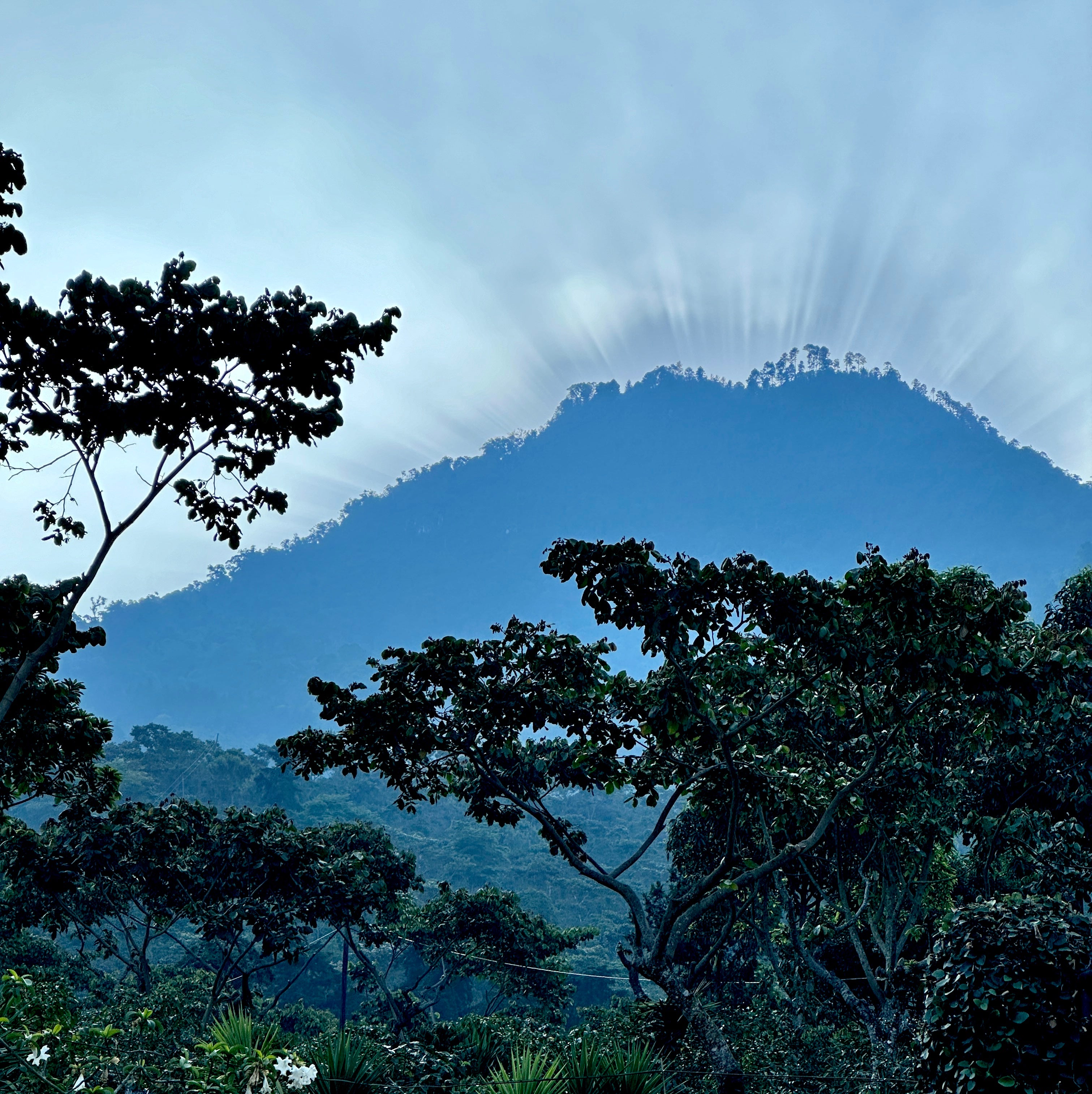
Sunrise at El Injerto.
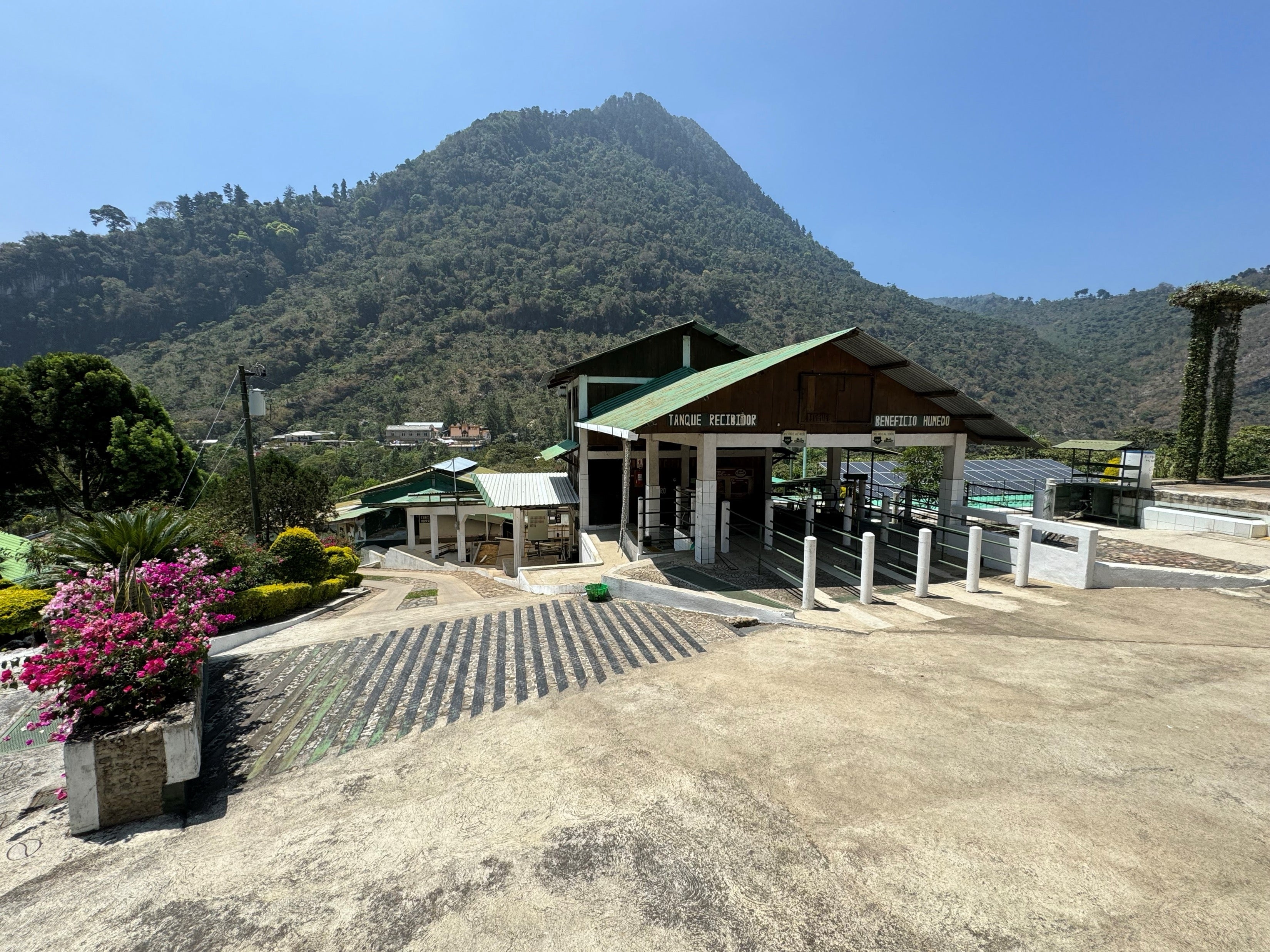
El Injerto Wet Mill, where coffee beans are separated from the fruits surrounding them.
Gravity, down slope, is used to move the process forward. At the bottom of slope, beans are completely cleaned and ready to dry.
Far in the distance – a small town has slowly developed as El Injerto has become the most famous coffee farm in Guatemala.
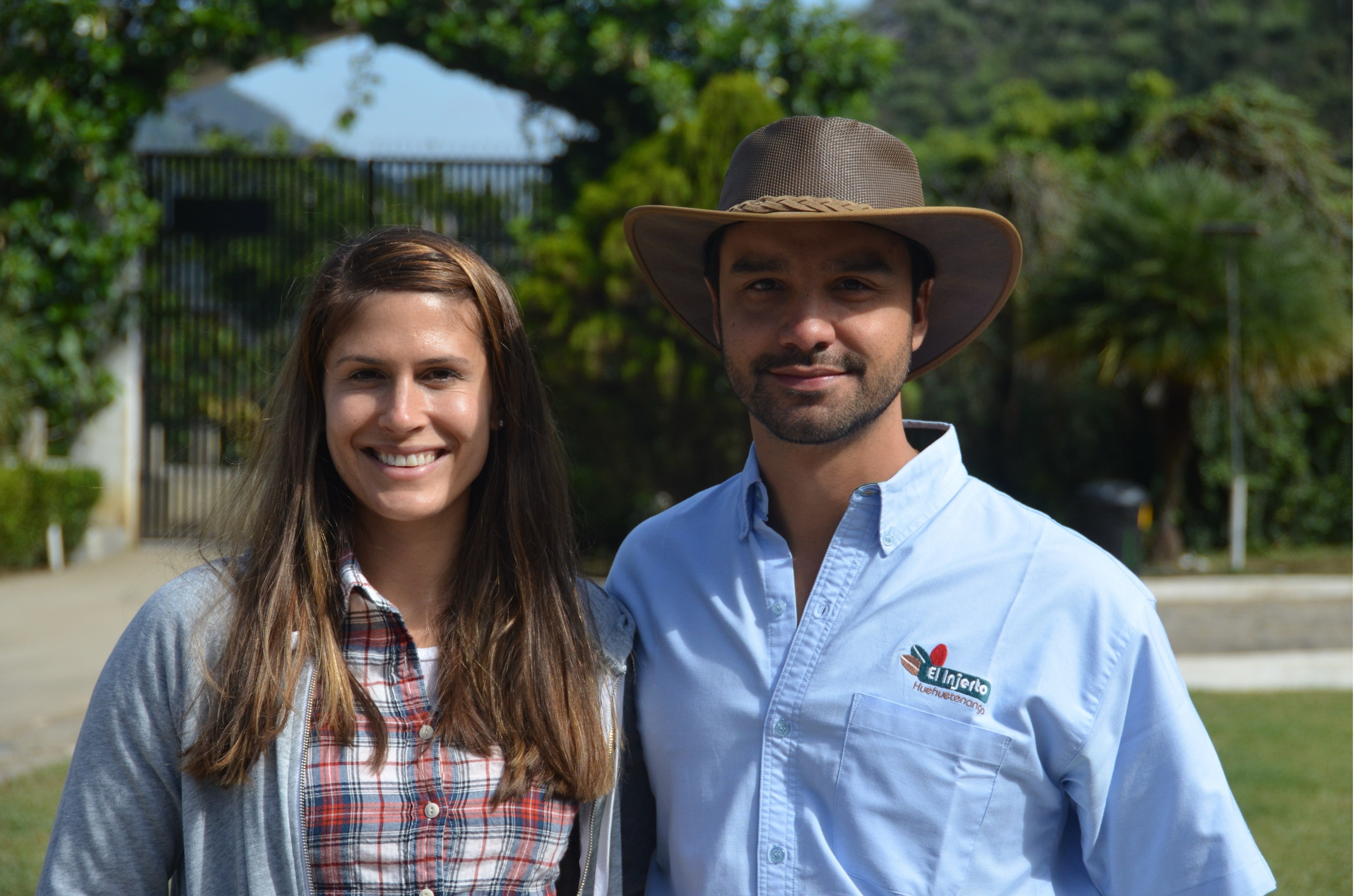
Arturo Aguirre, fourth generation owner of El Injerto, with Jenny Howell.
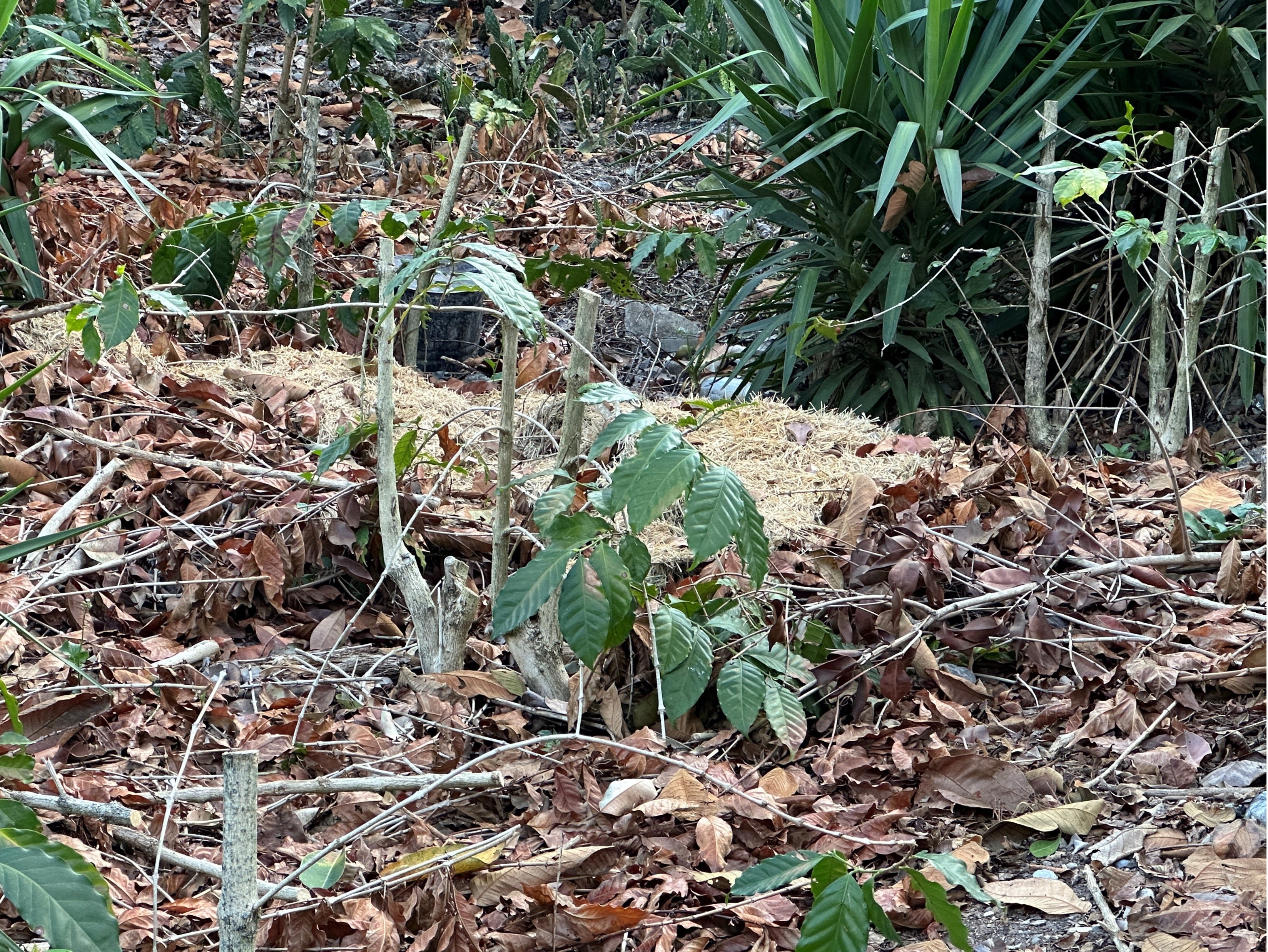
Coffee trees are stumped every 5 or 6 years to reinvigorate the plant’s productivity. Traditionally they were cut down to 12 inches (30 cms).
Arturo switched to 28 inches (70 cms) and is finding the plants grow back with more vigor.
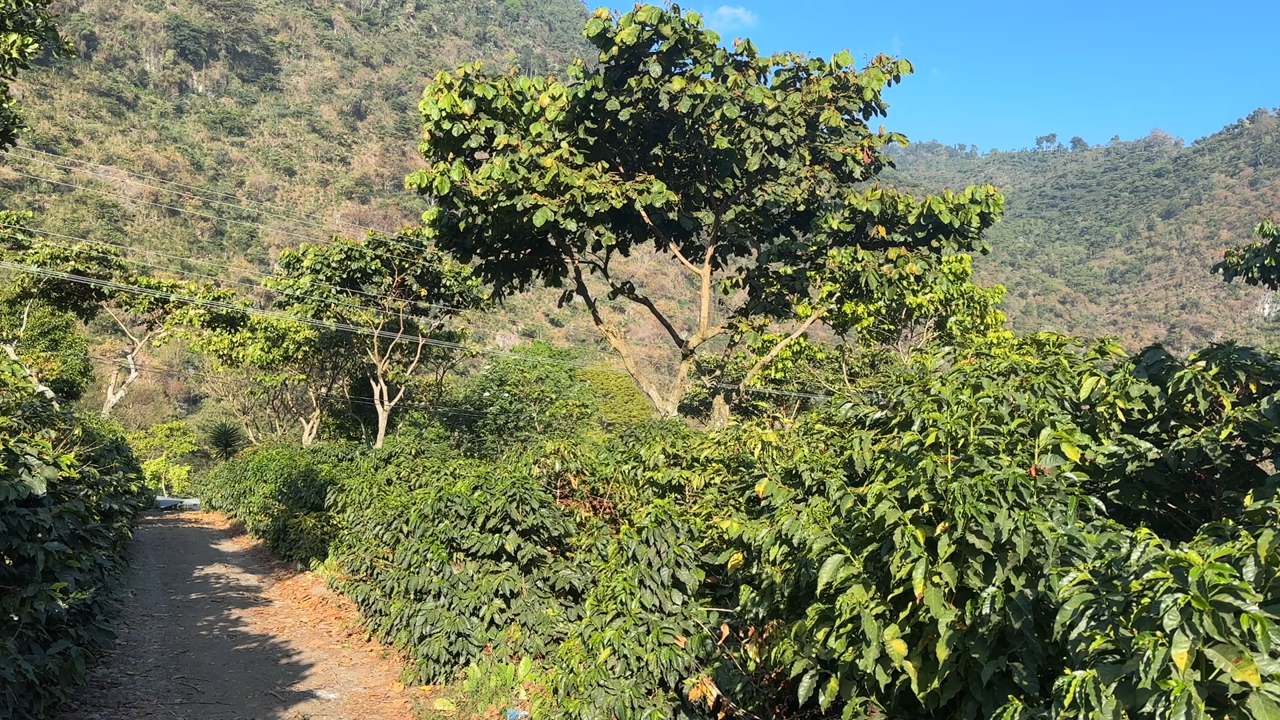
Inga trees provide partial shade to protect from the intense sun. El Injerto is allowing these pruned trees to grow higher than in the past to provide the same shade, thereby decreasing their number. This reduces labor which has become very scarce.
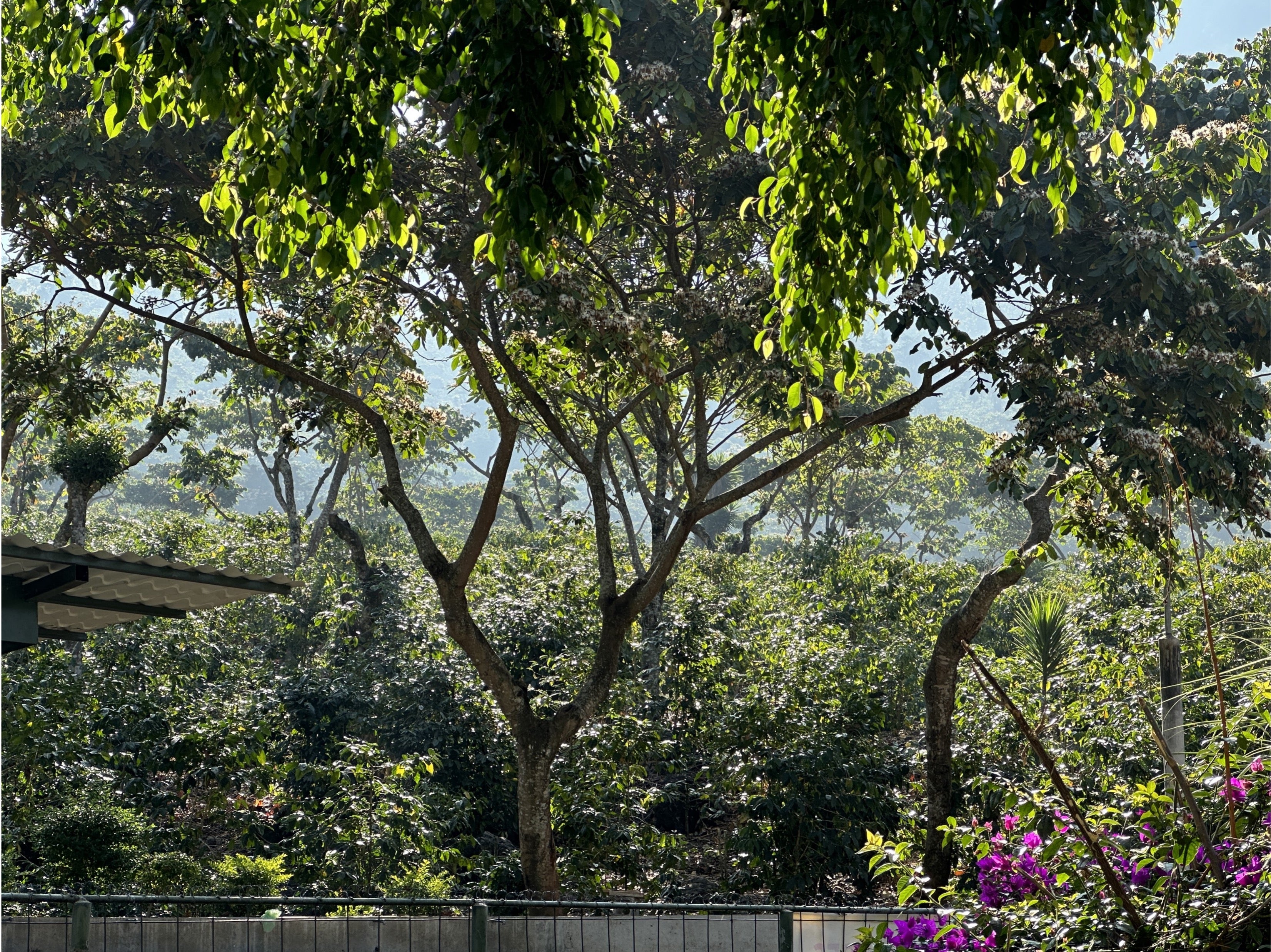
More Inga shade trees. They provide nitrogen through their roots and from fallen leaves, giving more vitality to the coffee trees.
There are several varieties of Inga; the Chalum variety is grown in Huehuetenango.
Spring water rushes down the mountain. It is used in the last step of cleaning the coffee beans, really seeds, after fermentation.
It also powers El Injerto’s hydro-electric power plant, located downstream, which powers all electric needs of the farm.
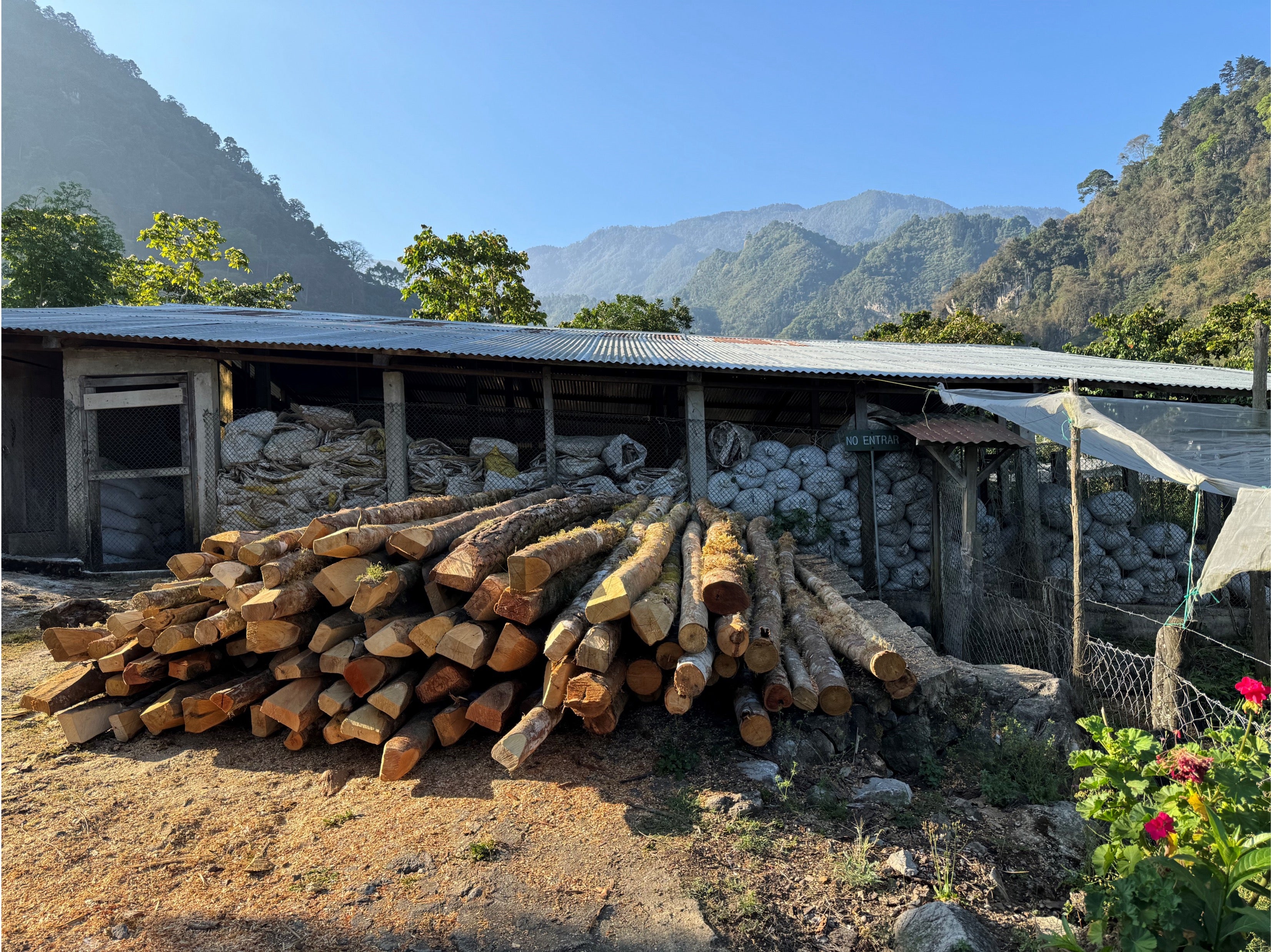
Timber for building enclosures to contain organic matter, mainly spent coffee cherries, that is to be transformed into compost.
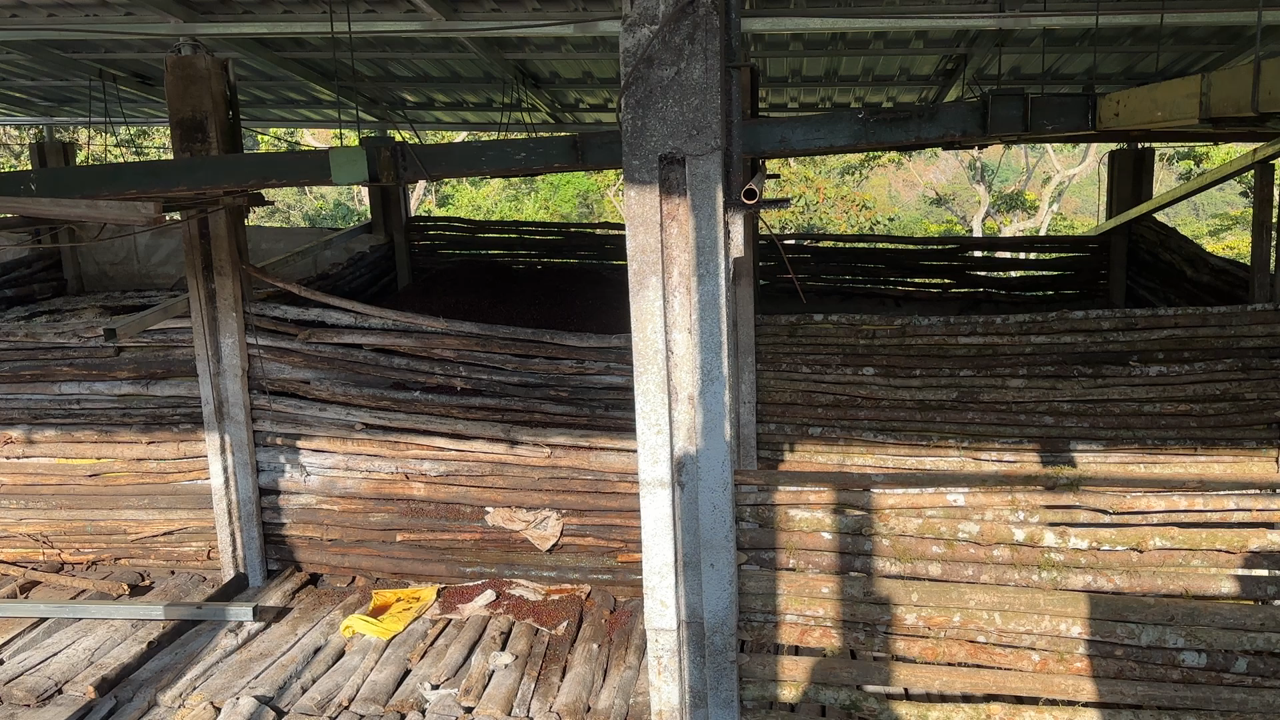
Enclosures for creating compost which takes 6 to 8 months before it's done. The uneven spacing of timbers allows oxygen to enter the piles of organic debris that must be kept moist at all times. A roof stands above to prevent drying from the sun.
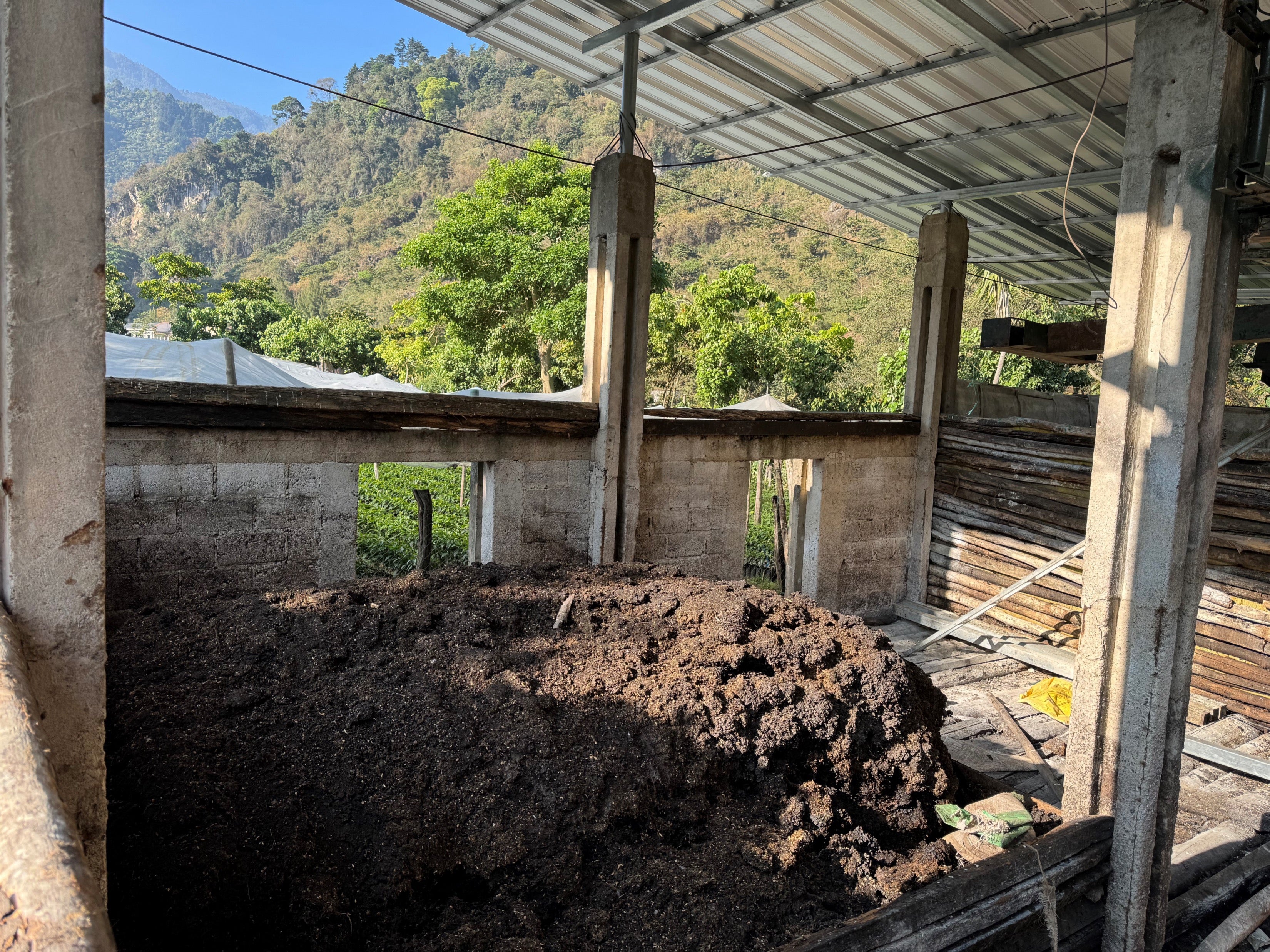
Compost from last year’s harvest, ready for further enriching with vermiculture. The resulting blend will be used strictly for the coffee nursery.

A 3 inch deep layer of compost is laid down for the worms to eat through. As soon as they consume their way to the top, another 2 inch layer is added until the worms have burrowed through that layer, and then another layer, etc..
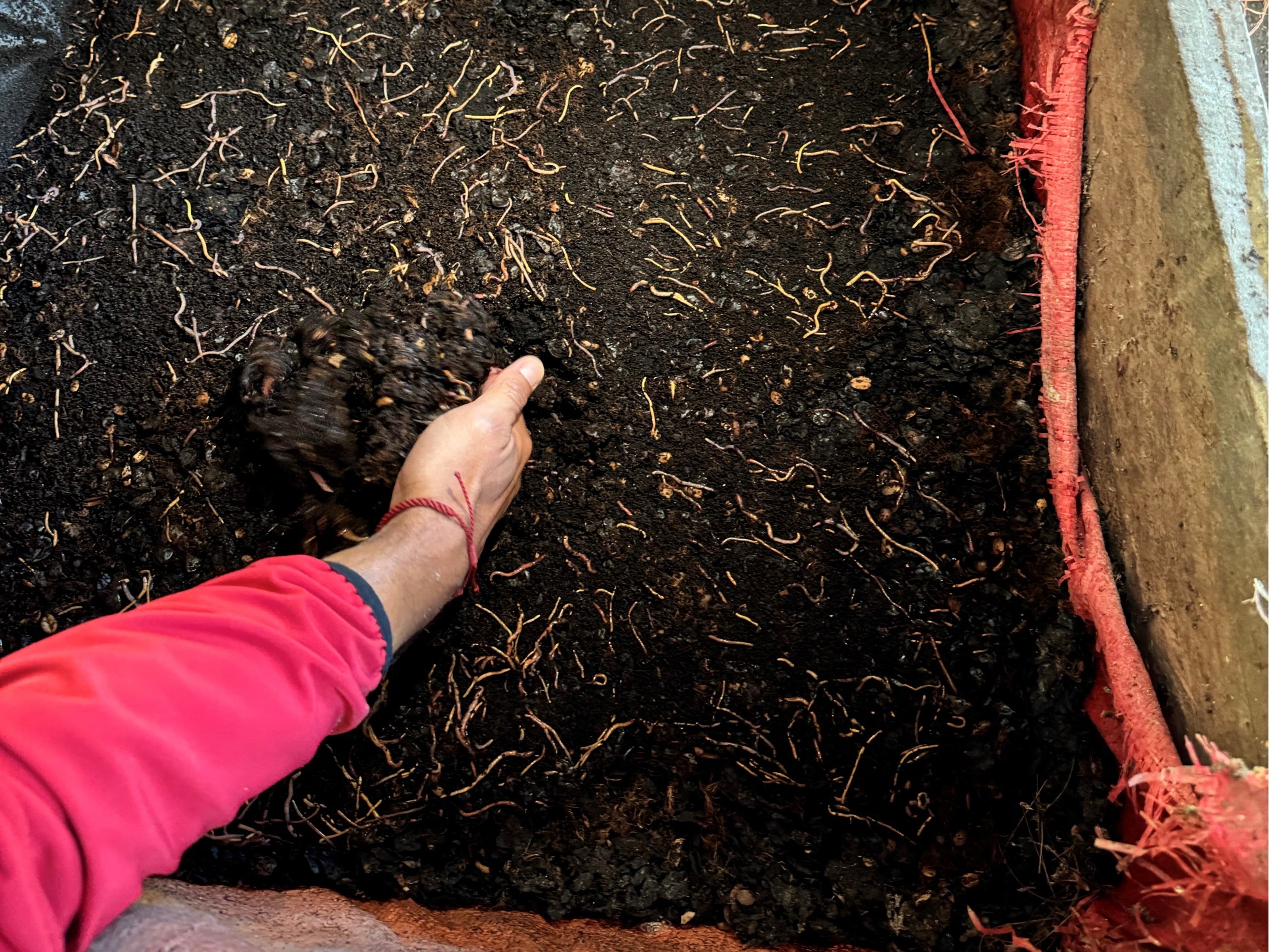
The worms are ready for more fresh earth!
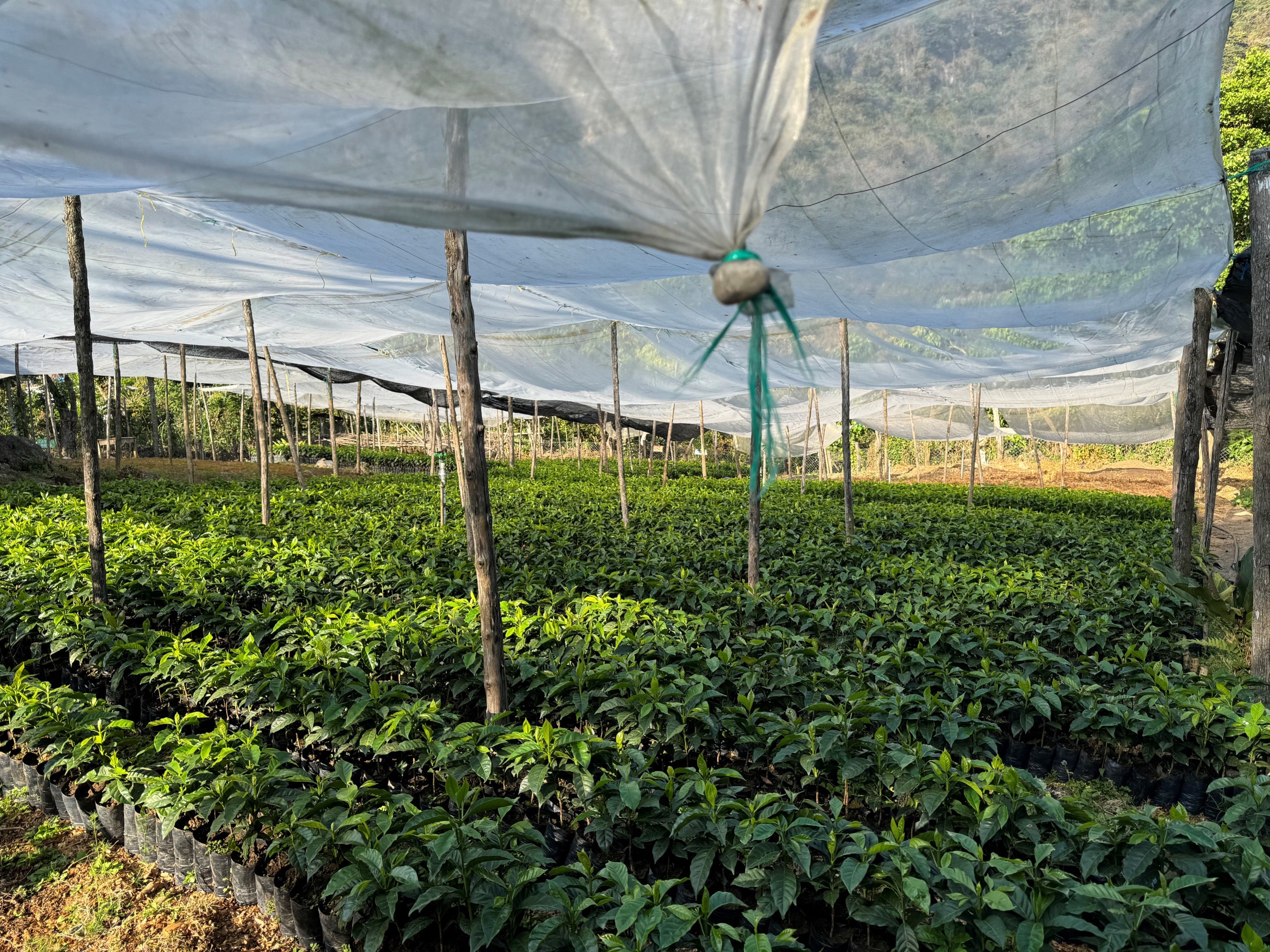
Coffee nursery: many varieties are planted here, to replace older less productive trees. Nurseries are partially shaded to protect from full sunlight.
It will take 4 to 5 years for a seedling to become a fully productive coffee tree.
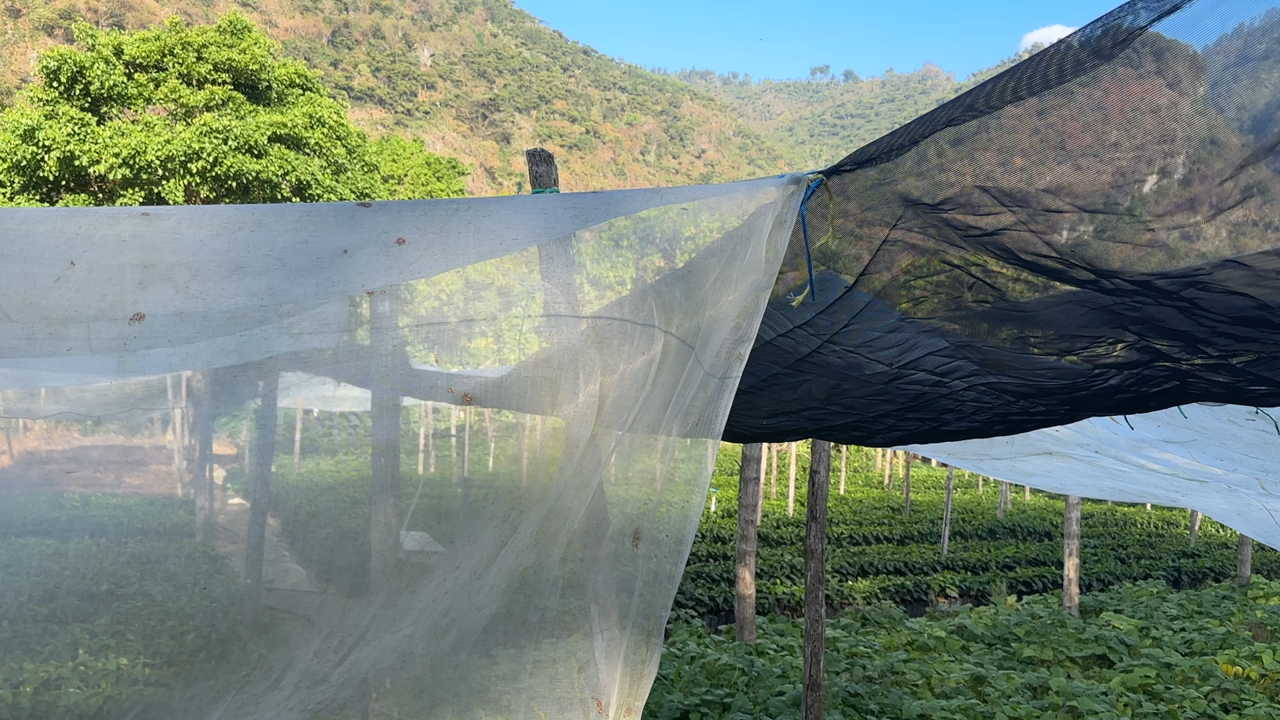
El Injerto has begun to use white netting instead of traditional black. They are finding the plants to be more responsive.
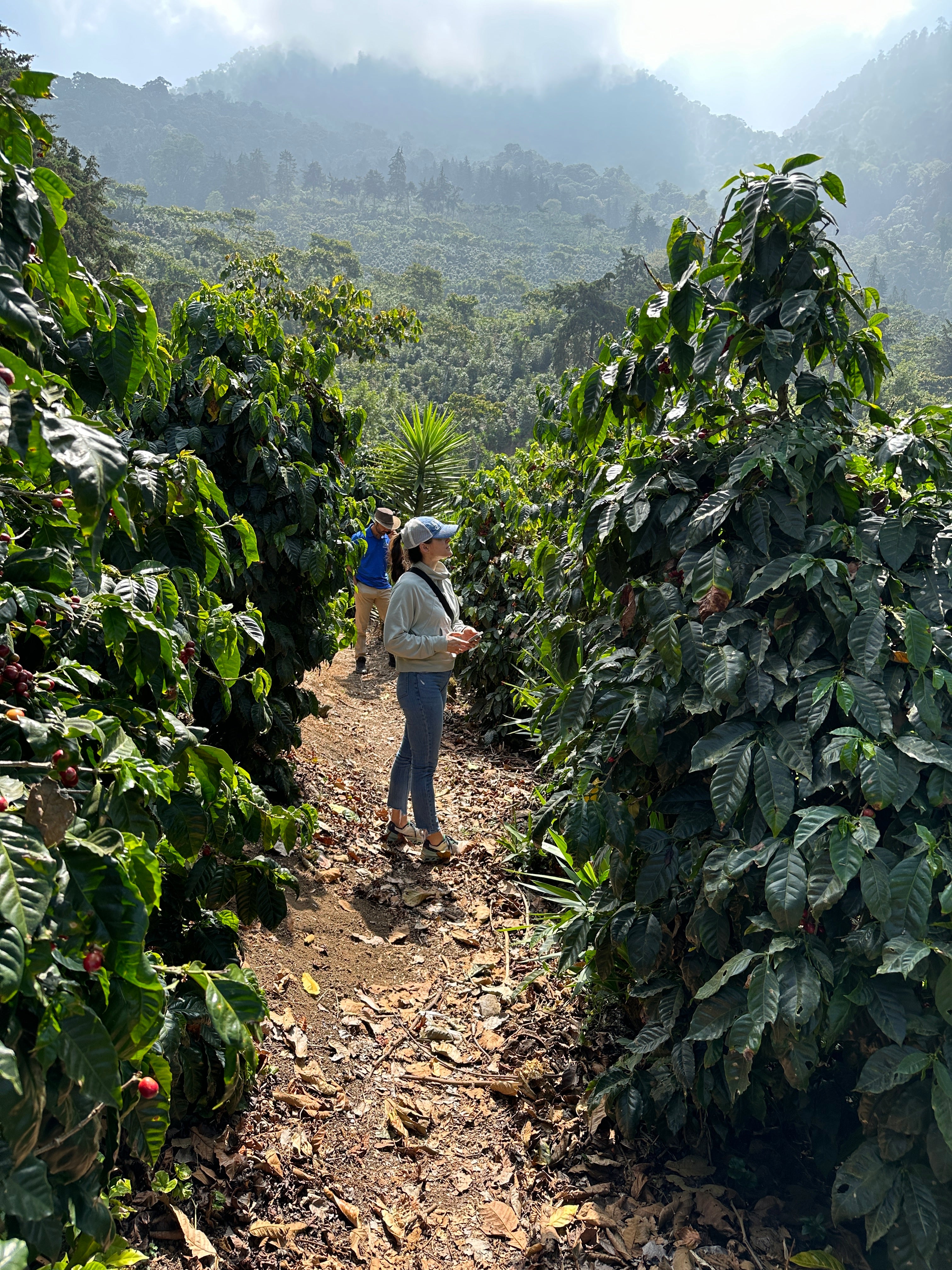
Jennifer next to fully mature, pruned coffee trees.
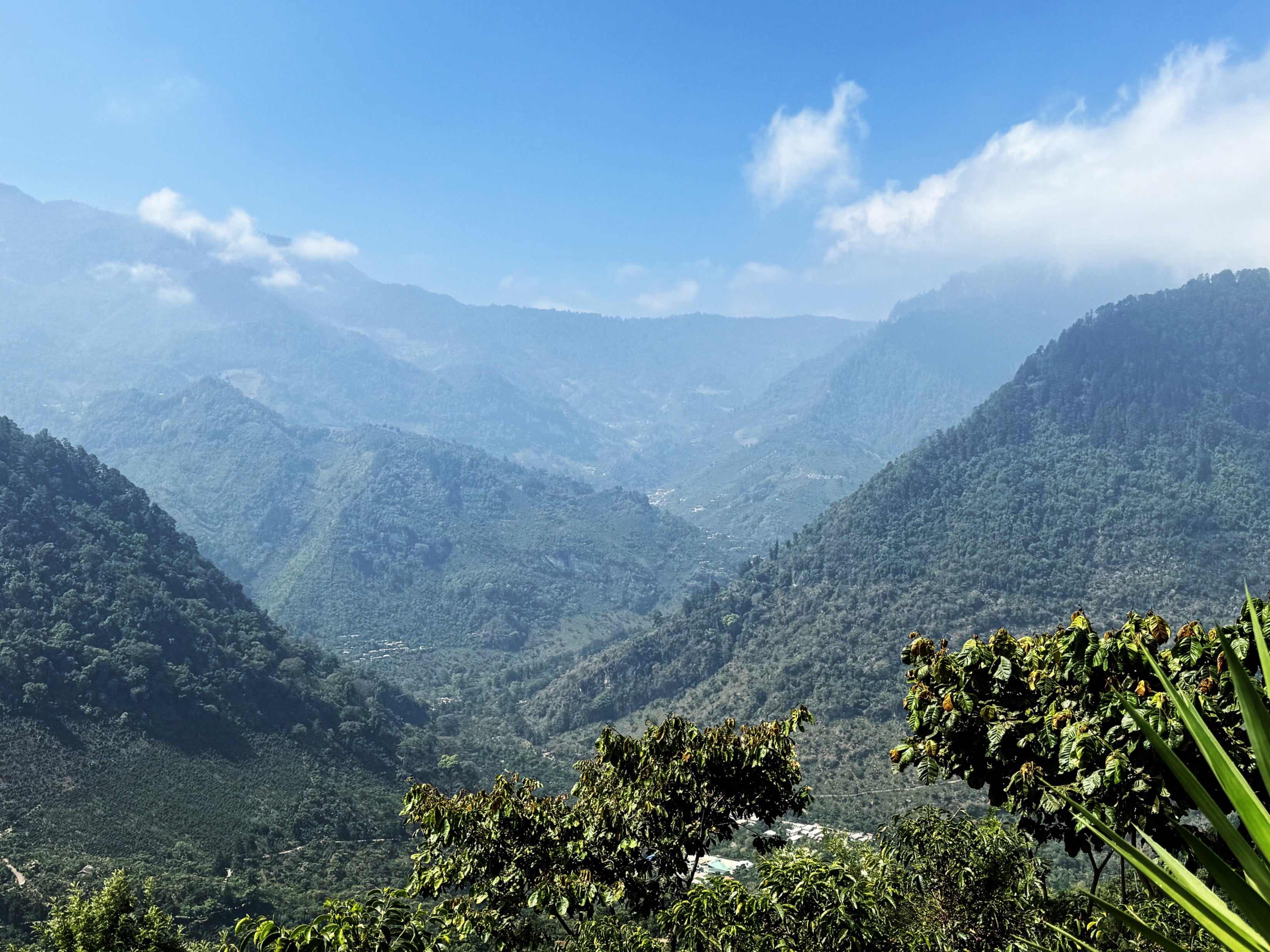
We drove 1,000 feet up to the higher parts of the farm, at 6,00 ft..
The rainy season is approaching , and the air is misty.
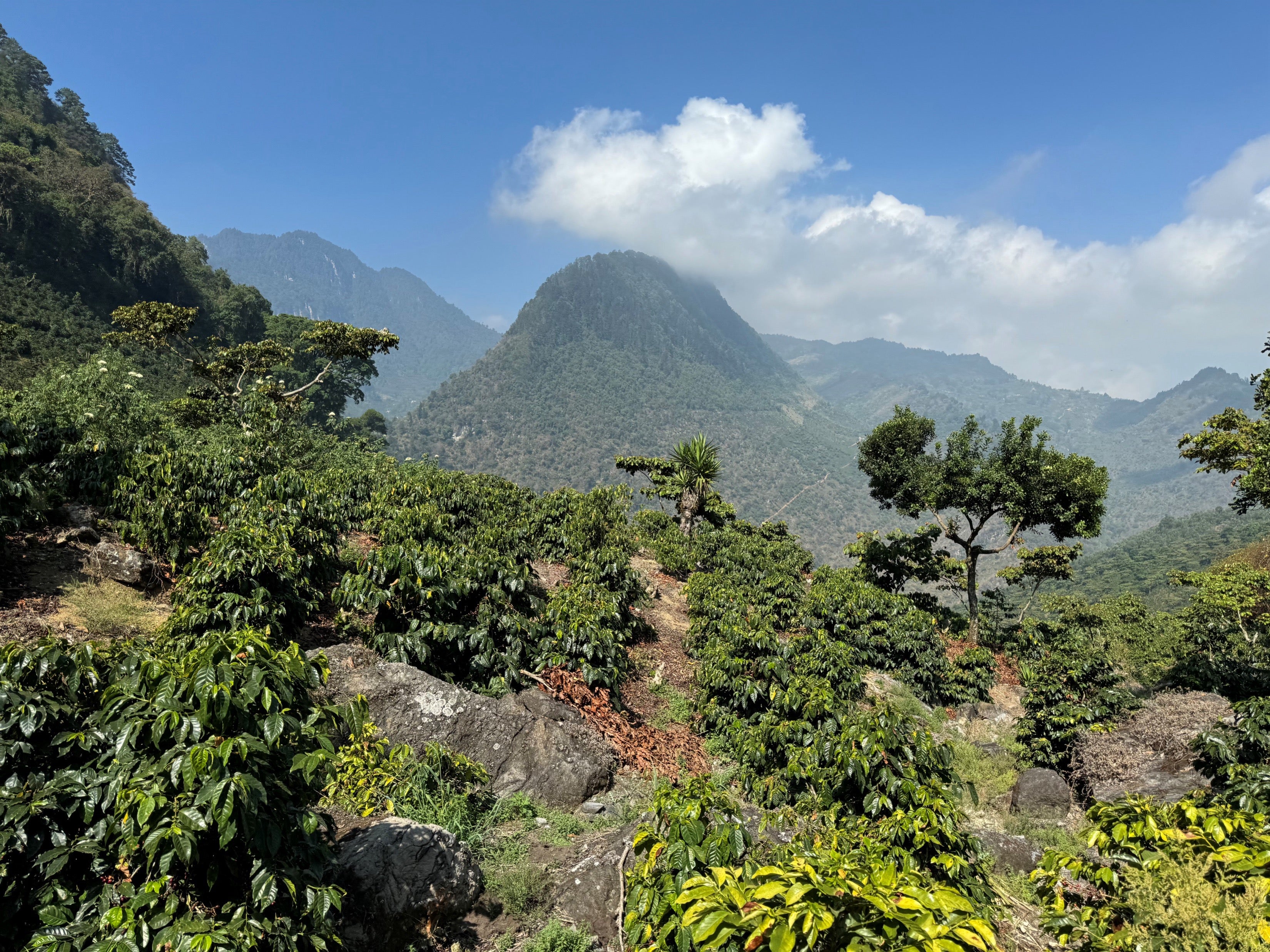
The tumultuous landscape of Huehuetenango. These coffee trees have already been picked. The harvest of this part of the farm is coming to an end.
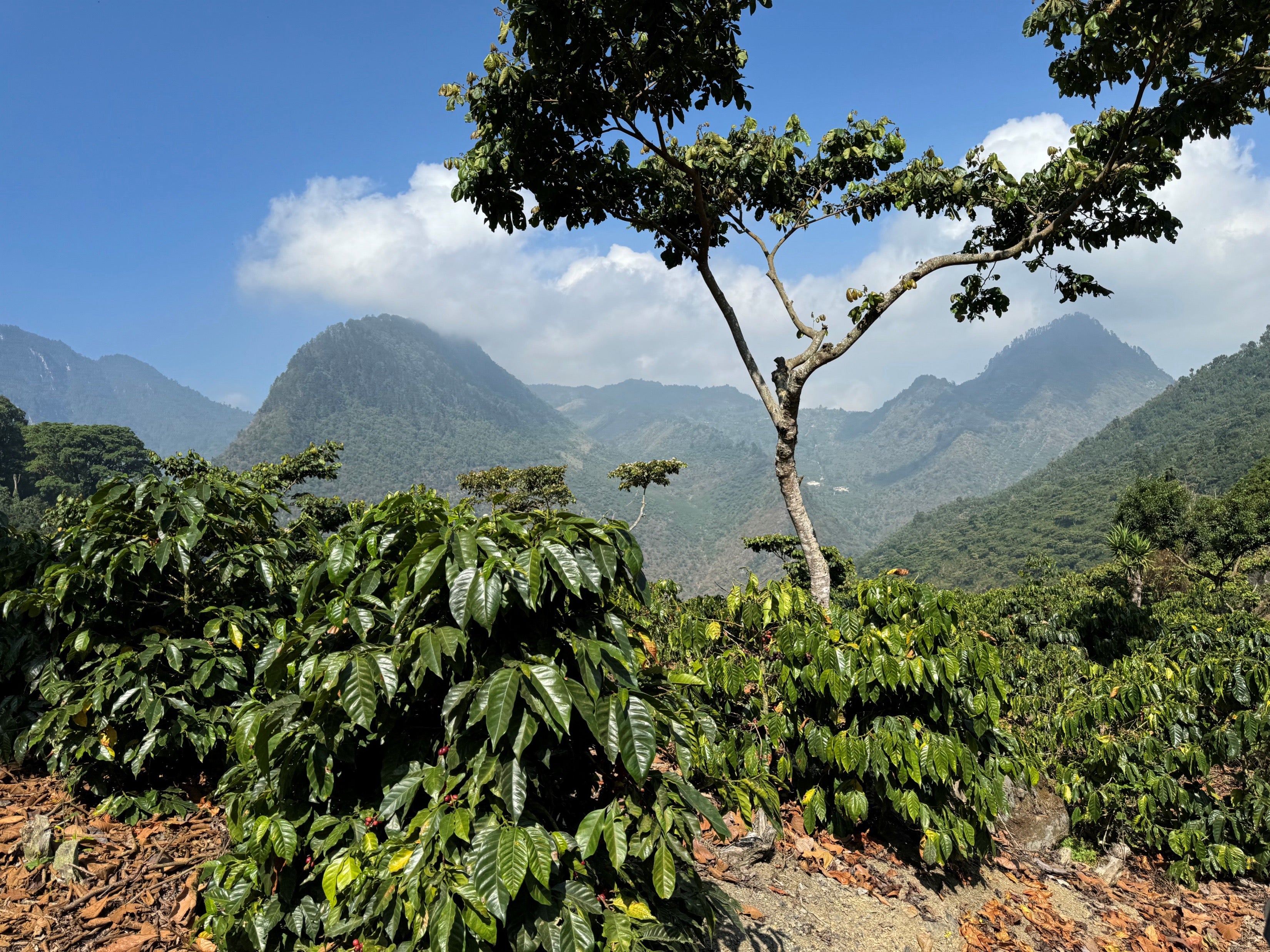
El Injerto extends all the way to the slope on the right. A Chalum shade tree stands above the coffee.
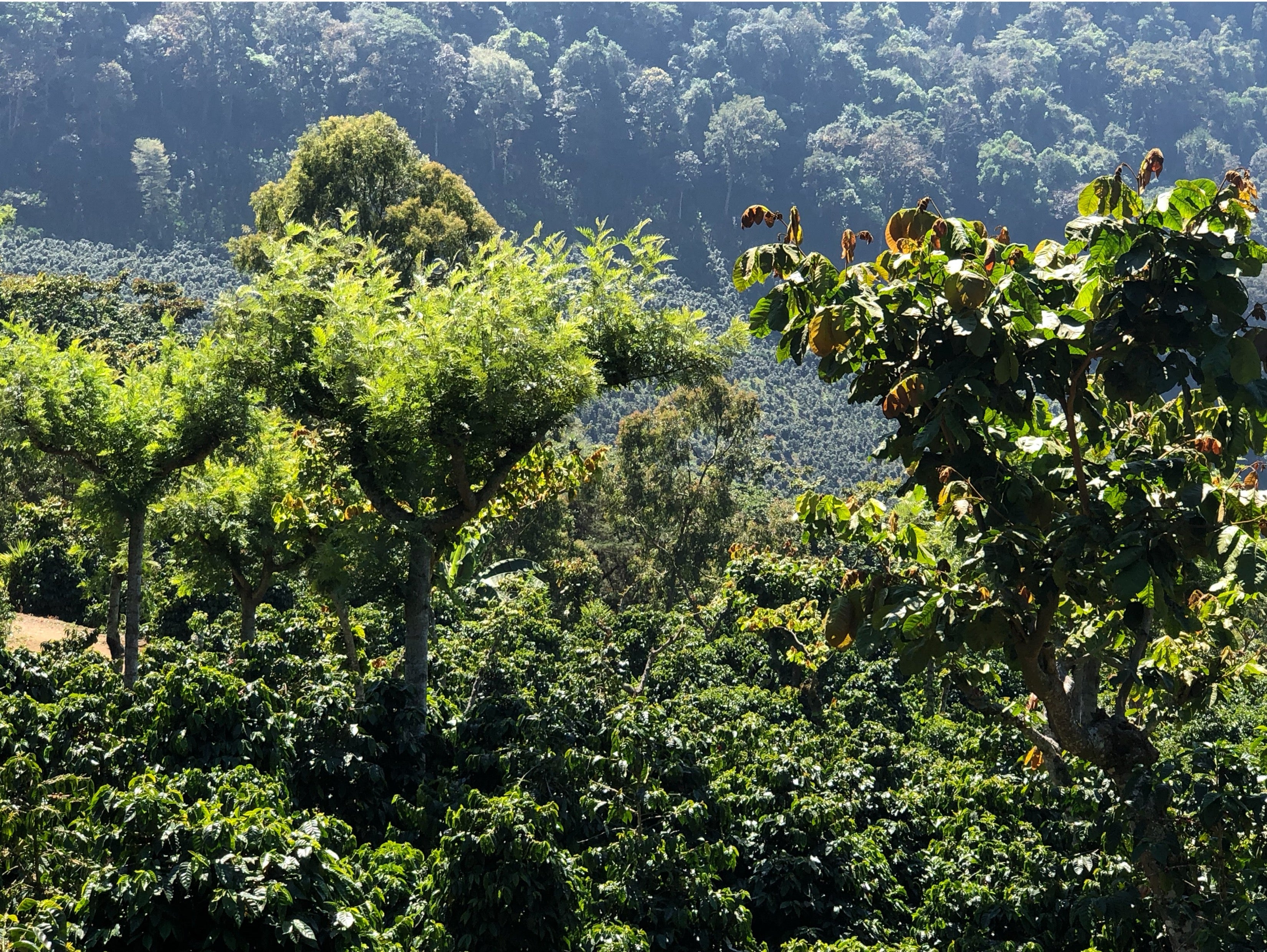
Still at the higher elevation we see Chalum shade trees (on right) are replaced with Gravilea trees (on left). While not nitrogen producing like Chalum trees, they are more resistant to colder temperatures, even withstanding frosts.
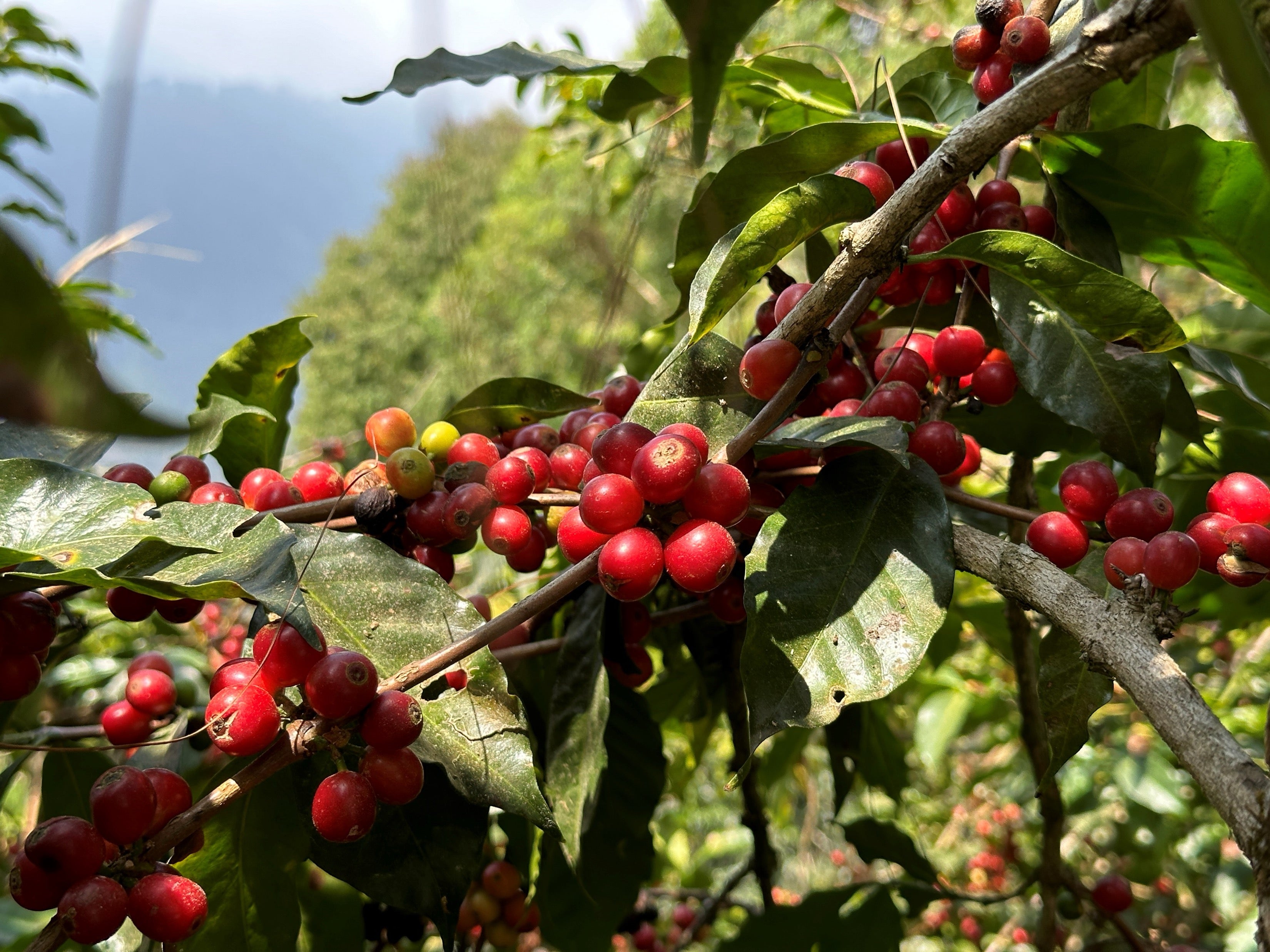
Ripe cherries, ready for picking, have only just ripened at the highest elevations of El Injerto.
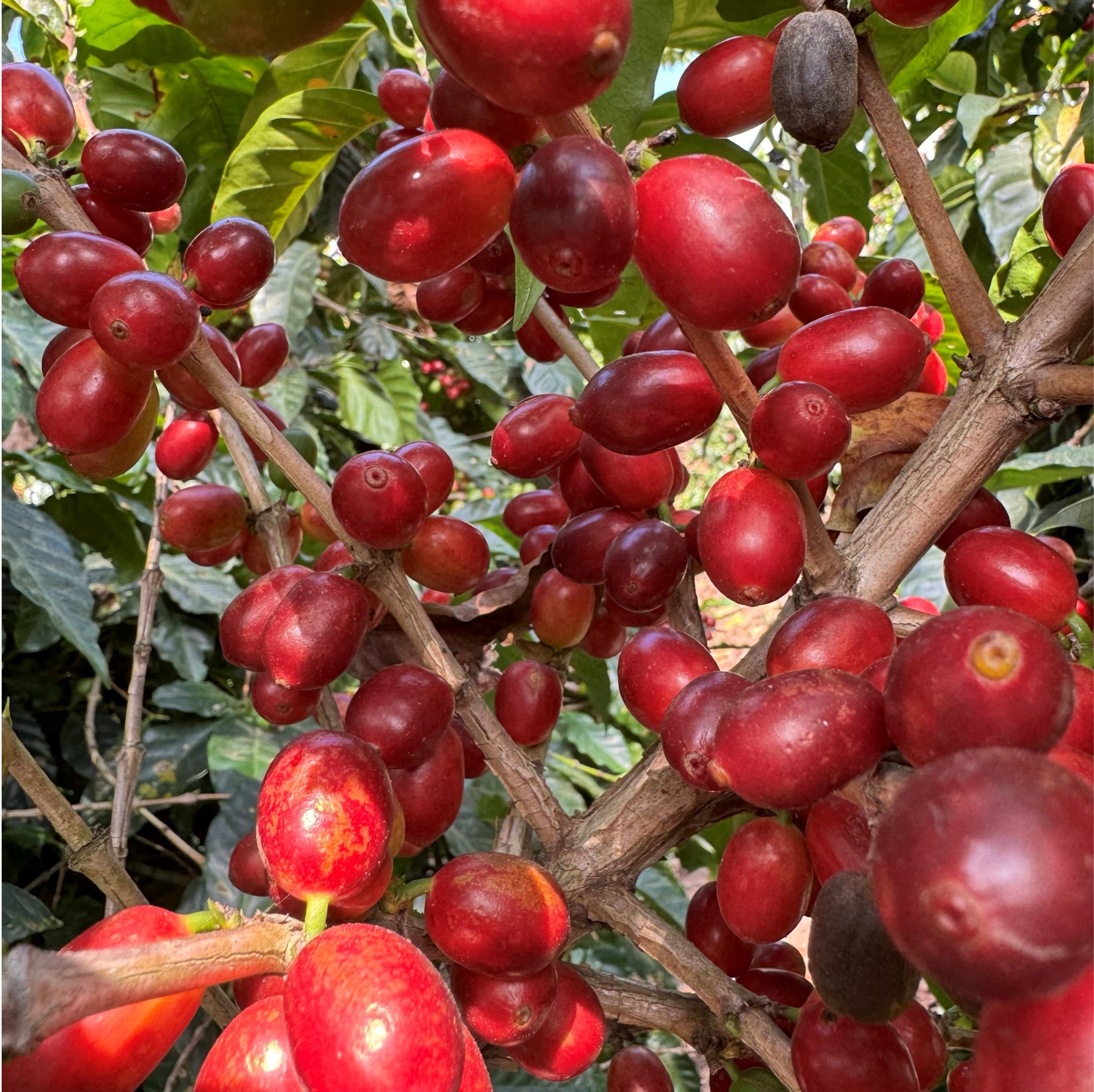
Pick one, squeeze it, and out will pop 2 coffee seeds, aka beans! There is no fruit to eat, just mucilage to suck on. When ripe like these, it's very sweet with a mild papaya-like flavor. The perfect color for picking!
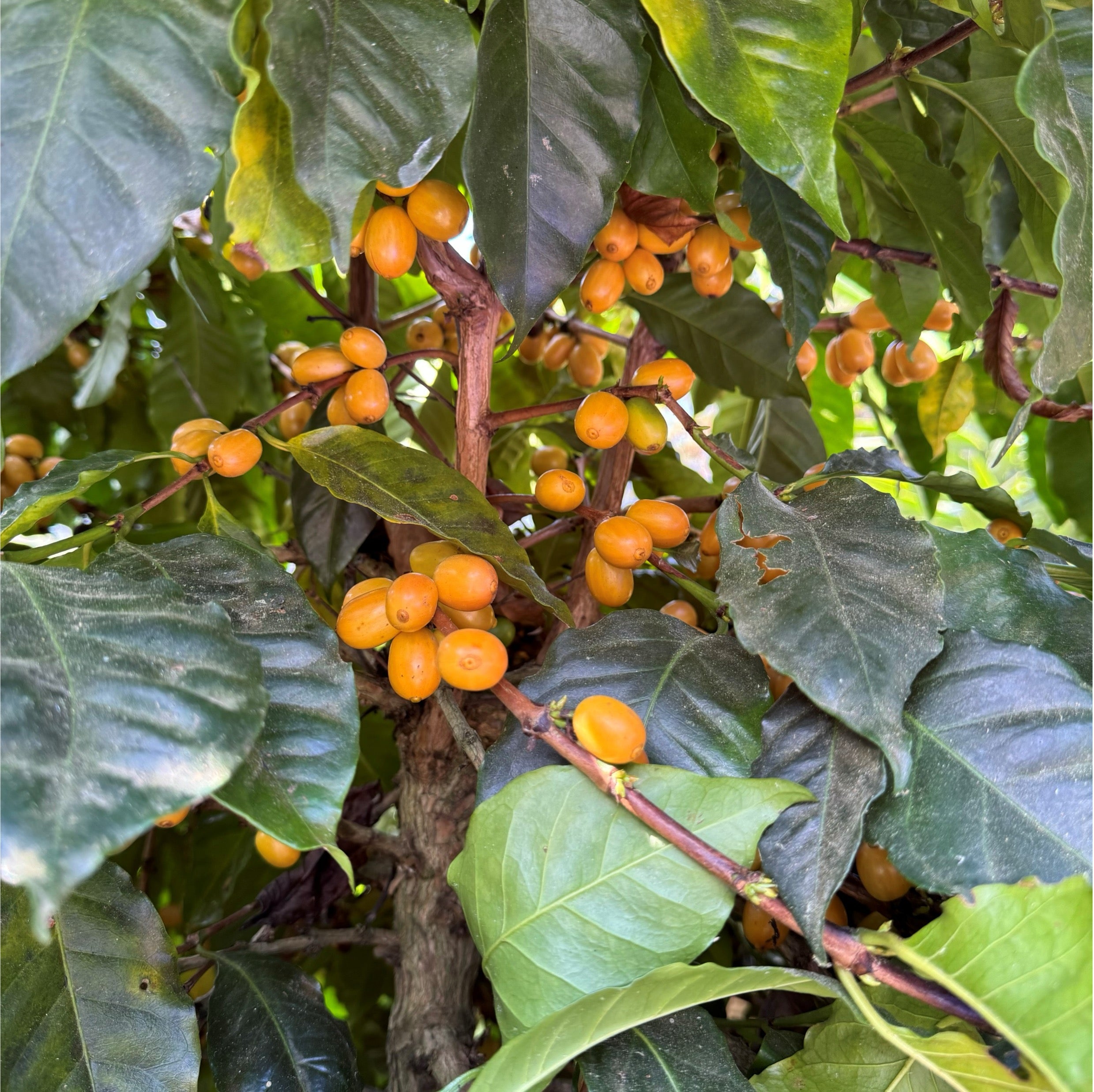
Yellow Pacamara coffee cherries. Everywhere else in the world, Pacamara cherries are red. Here, a few plants mutated to produce yellow fruit some years ago.
Yellow Pacamara has won El Injerto seven 1st place wins for its buttery mouthfeel and sweet flavor in Cup of Excellence competitions.
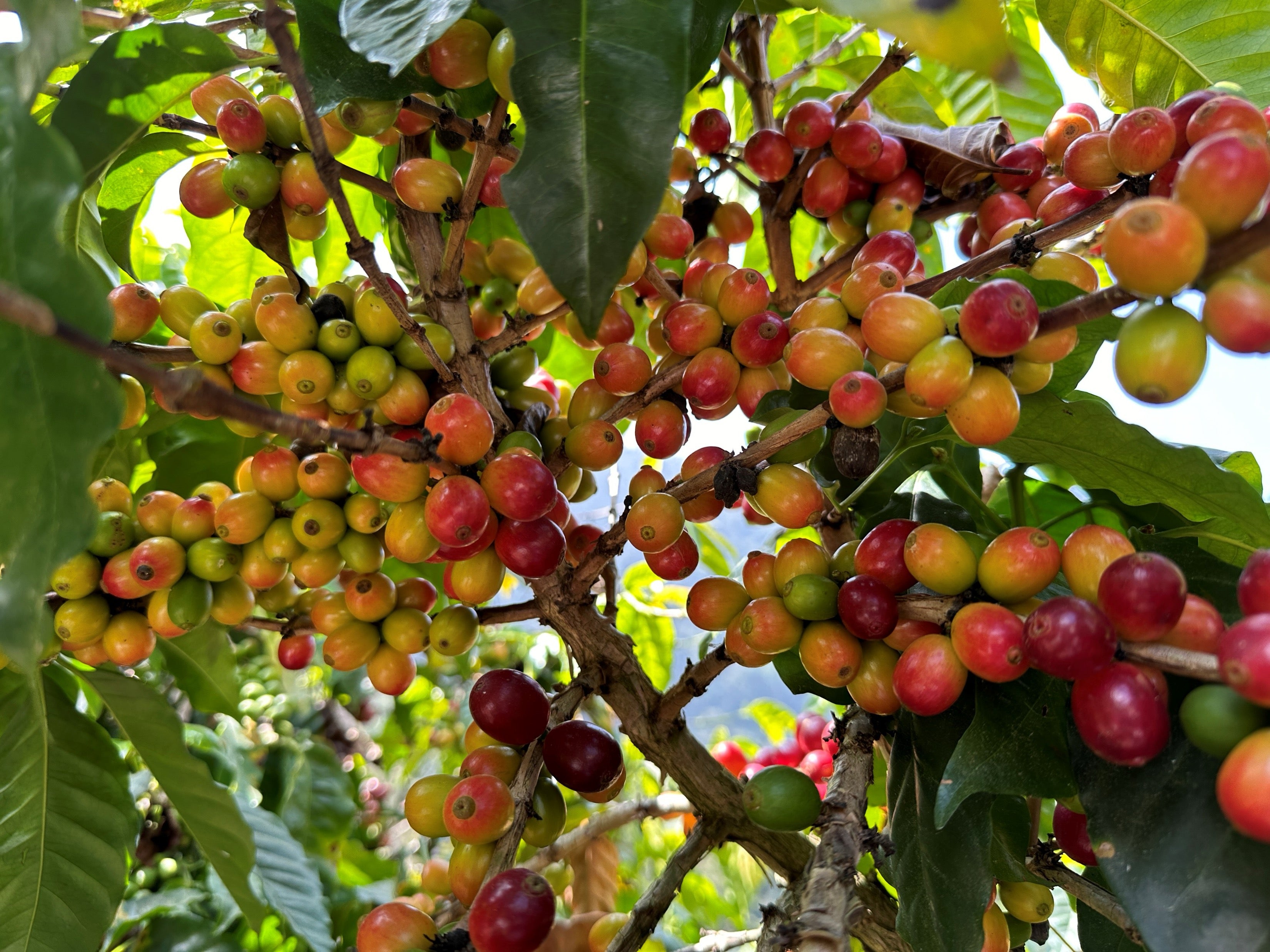
Ripe and ripening red cherries. Pickers must hand-pick each tree at least three times during the three month harvest, selecting only ripe fruit.
The picked cherries are bagged and brought down from the slopes to the receiving station. These bags can weigh up to 150 lbs.
Pickers are paid for the weight they harvest. Migrant indigenous
workers are brought in from widening areas of Guatemala, as labor becomes ever more scarce. In particular, many men have gone to the US for better pay.
The cherries are moved through a pipe to a floating tank. Cherries that float are lower grade and will be siphoned off.
The floaters go through a rotary sieve, in which really small cherries of even poorer quality, slip through the slots. Bigger cherries proceed for further processing.
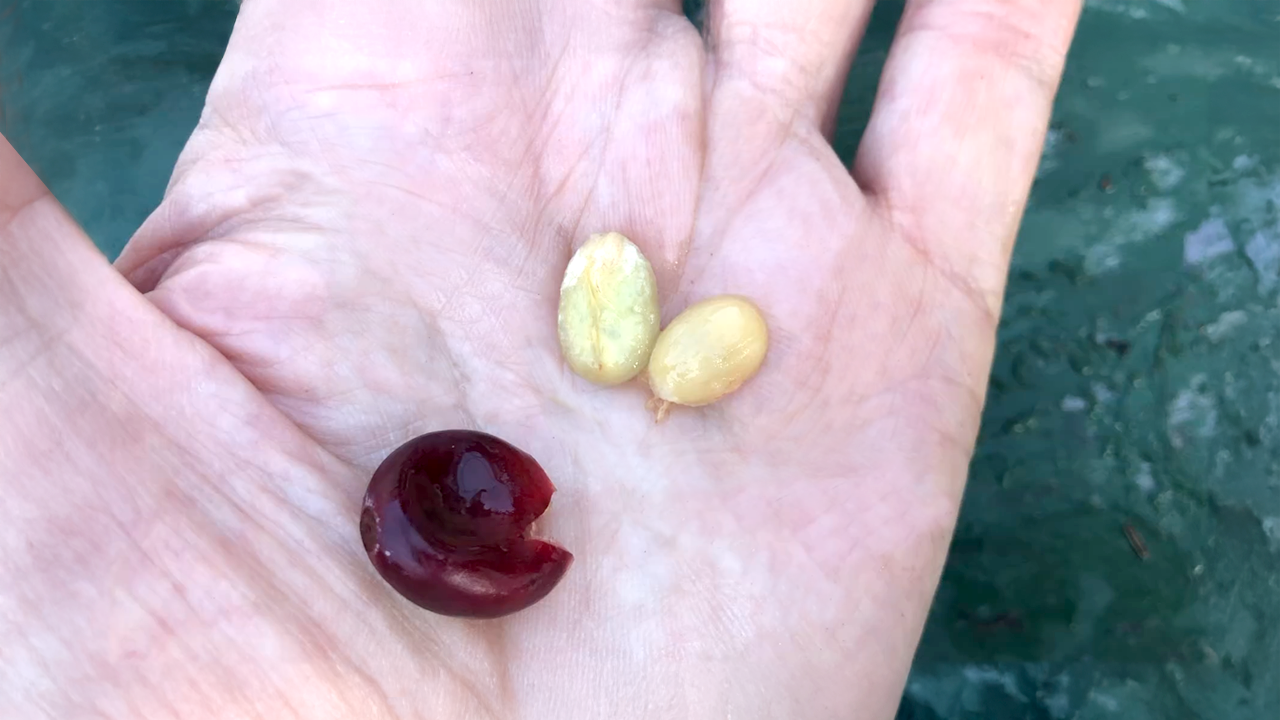
This is a floater cherry. A coffee cherry almost always has two seeds, which we call beans. In this cherry, the yellowish bean (right) has very little density, causing the cherry to float. It will not be exported. The greenish bean (left) has proper density and will be put into a second-grade quality lot. The two beans will be mechanically separated further down the line.
Floaters are passed through the rotary sieve. The red cherries that sank are transported by recycled water to depulpers.
The lowest grade, having slipped the sieve.
The cherries that sank continue on. Here, the depulper takes the skins off. The seeds then go to a rotary sieve which separates any remaining skins. The beans, covered in mucilage, fall through the slots and head to the next step.
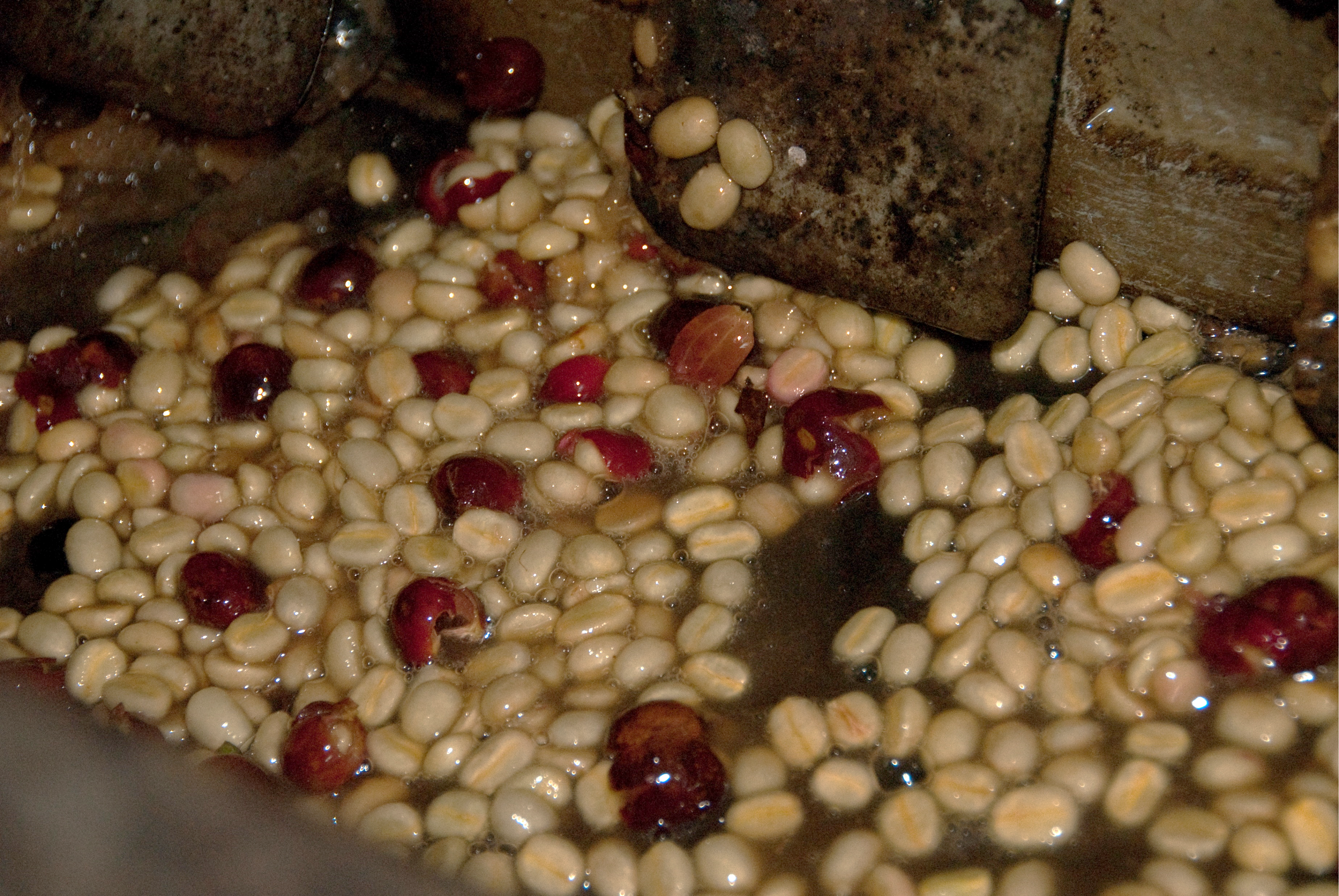
Depulped Beans with clinging mucilage.
The beans go through another rotary sieve for good measure. Quality demands redundancy! Then the mucilage covered beans enter a fermentation tank, where they will stay for 40+ hours.
“Fermentation” in coffee is misleading. It is not the same as with wine or bread. Fundamentally, it's about rotting the fruit to permit easy removal of all surrounding fruit with turbulent water.
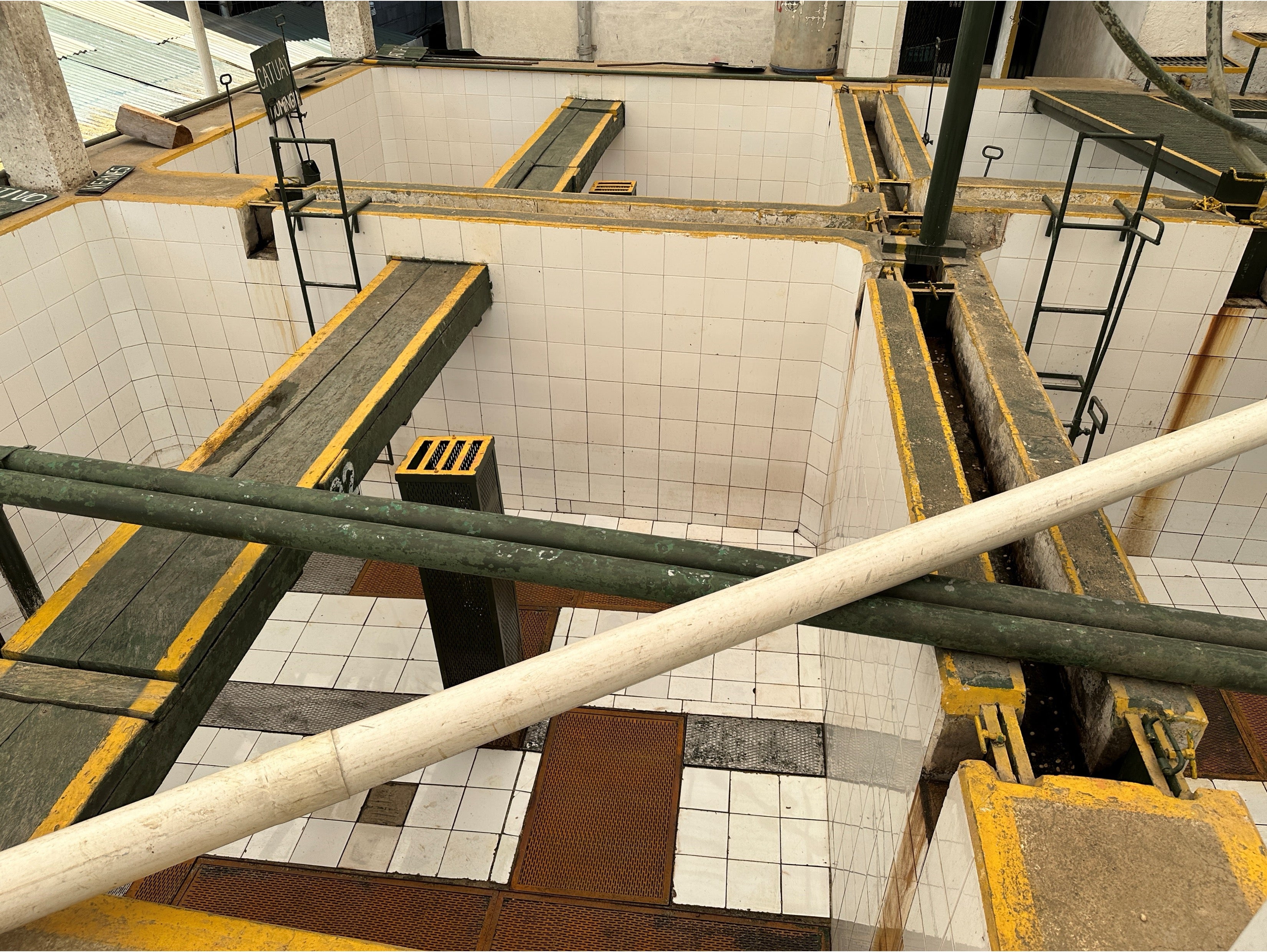
The mass of beans are aerated from below to achieve even results.
The length of time coffee beans ferment does affect the flavor and the sweetness, however, we have come to understand that fermenting is not just about removing all the fruit to achieve a clean cup, as was once thought. It is also about developing the full potential for sweetness a particular lot may have, while preserving clarity of expression.
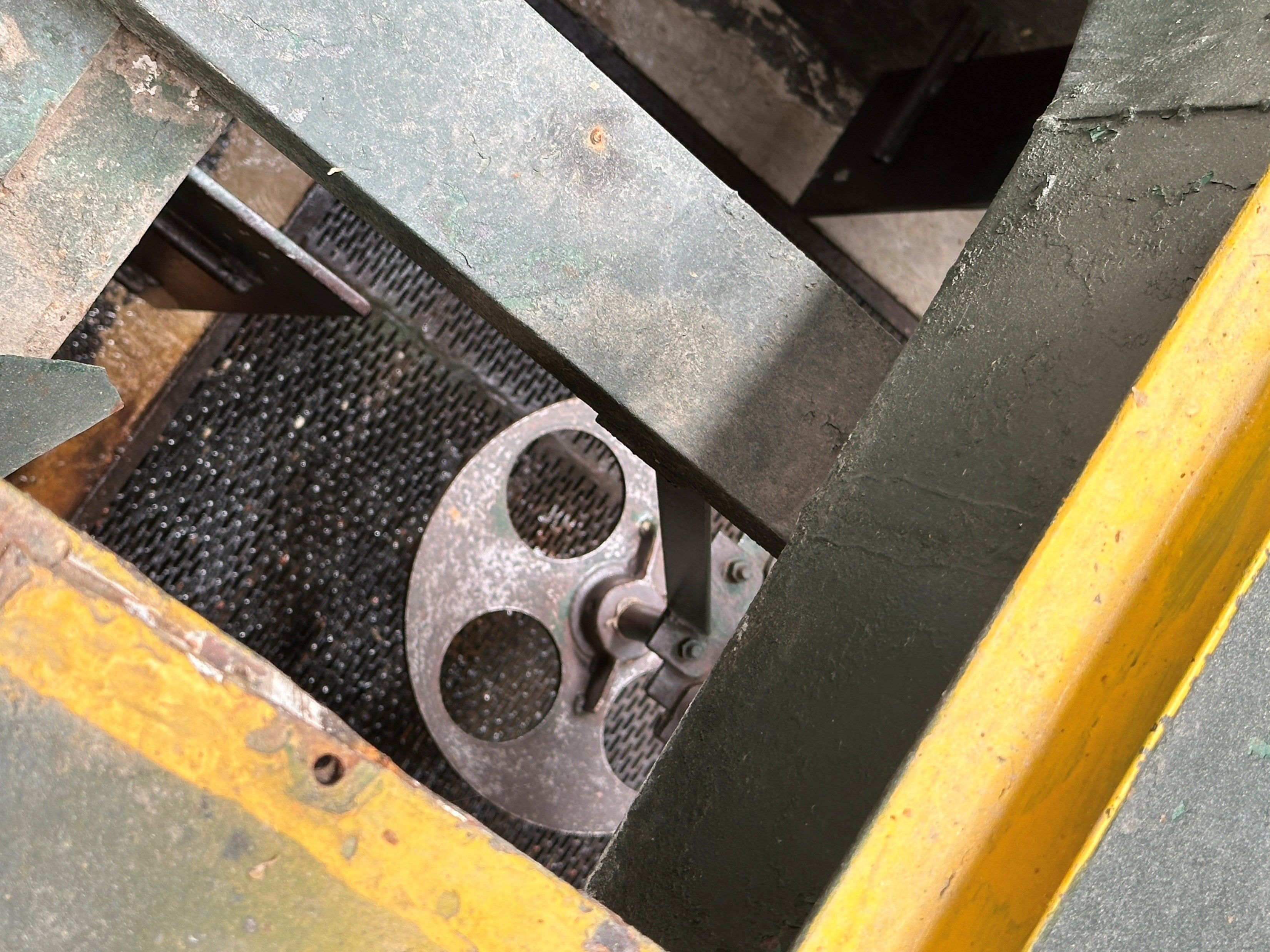
A plate in the corner of the fermentation tank slowly rotates. This action mixes the mass of beans, further ensuring even fermenting.
Checking to see if fermentation is finished. “It smells really rich!”
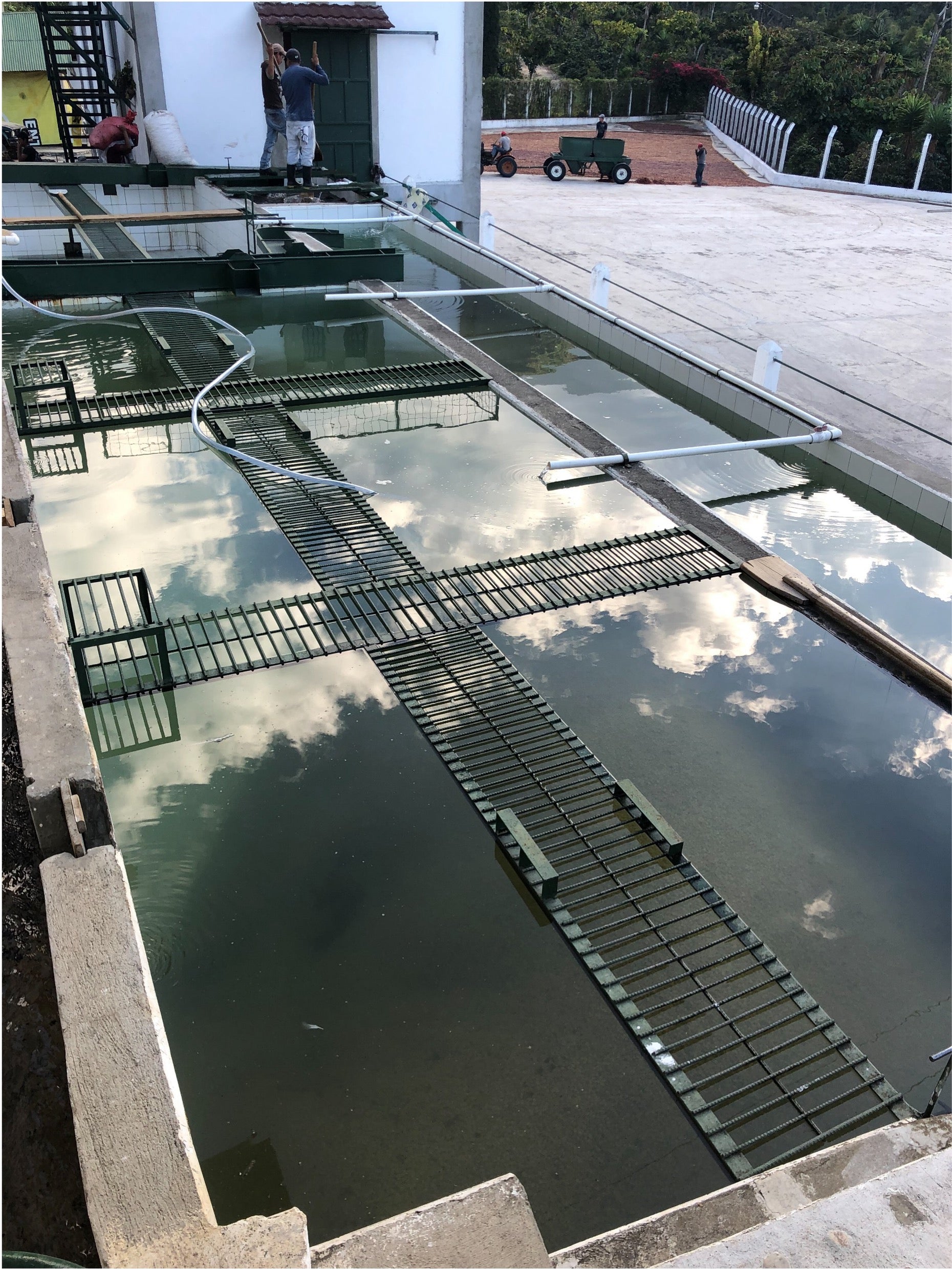
The finest grade coffees soak for 24 hours in pure spring water from the mountains above.
This process cleans the last remnants surrounding the beans, refines the flavors, and adds a touch more sweetness to the cup.
Large lots are dried on patios, raking one way, then the other.
Smaller, special lots are dried on raised beds.
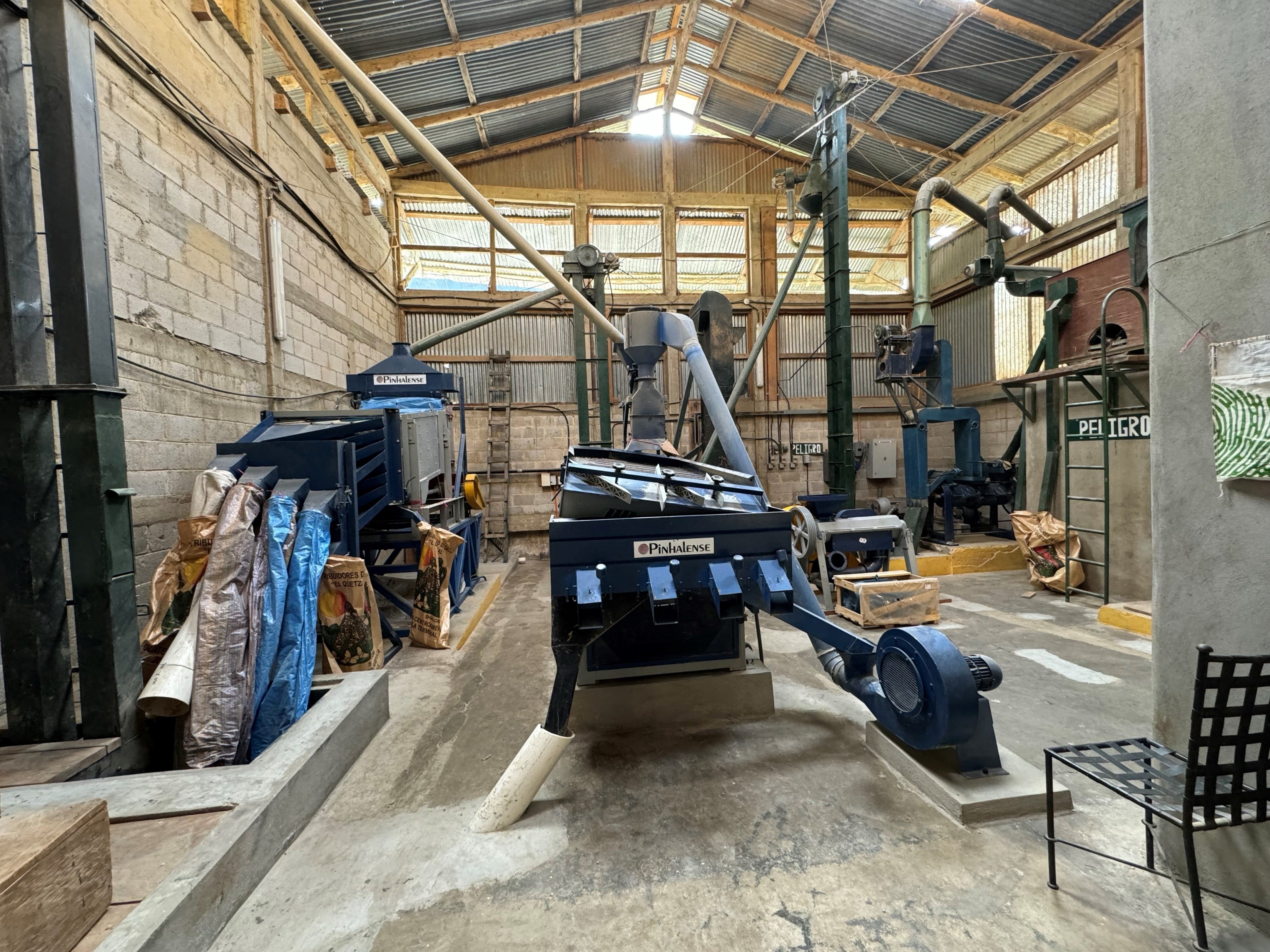
Once dried to about 10% moisture from 60+%, the beans are separated by size (left), and then by density (center).

The third step is sorting by defect. Beans are dropped single file past an electronic eye. Rejected beans are blown out of line. A new, faster, and more efficient machine is still wrapped, but will soon replace the current one.
Soon after this process, the beans will make their way to us!
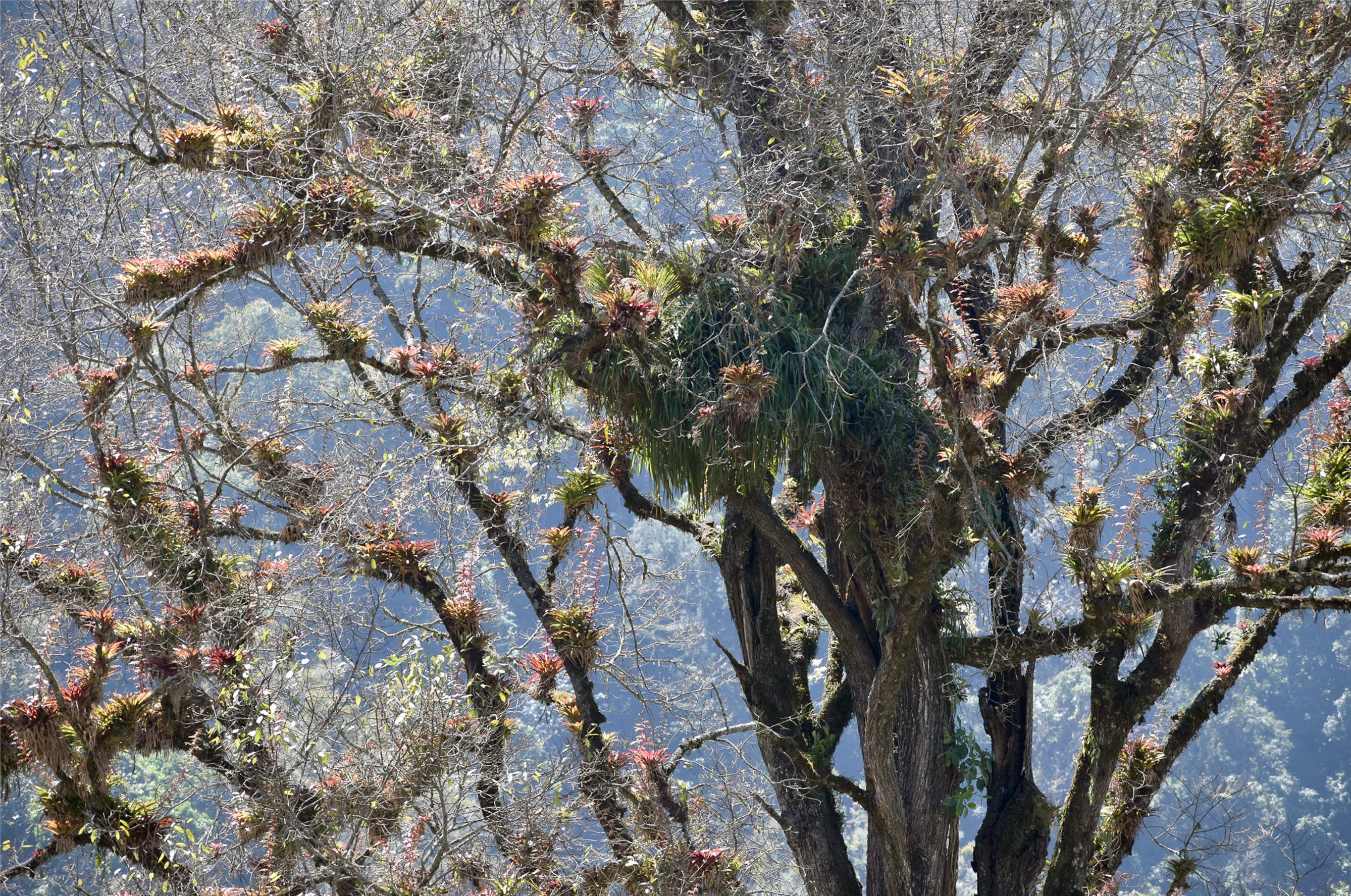
Epyphytes, which are not parasitic, can be seen on this ancient tree in El Injerto.
We left El Injerto inspired by this farm’s pioneering dedication to producing the highest quality possible. We will be back, El Injerto
willing! Thank you, Arturo!

